
- Malawi’s Regions
- North Malawi
- Central Malawi
- South Malawi
- Malawi’s Experiences
- Sports & Wellness
- Malawi Accommodation Filter
- Special Offers
- Accommodation
- Tours, Safaris & Activities
- International Agents & Tour Operators Offering Malawi
- Holiday Planner
- Getting There
- Getting Around
- Touring Malawi
- Travel Advice
- Responsible Travel
- Family Travel
- Info Packs & Downloads

Two of the great attractions of Malawi’s national parks and wildlife reserves are their completely unspoilt wilderness and the absence of mass tourism. When you take a safari in Malawi you really do feel you’re looking at a scene that David Livingstone would recognise from 150 years ago. There’s a real touch of the Garden of Eden about the parks. You discover the animals on your safari, they are not lined up for your viewing as though in a theme park.
The big five (lion, leopard, buffalo, elephant and rhino) can be seen in Malawi as well as a splendid range of antelope and the smaller cats such as caracal and serval. Hippos are to be found in large numbers, so much so that they are almost symbolic of Malawi’s wildlife. A safari in Malawi is about memorable experiences, not tick lists. Plenty of animals in beautiful surroundings but no convoys of vehicles characteristic of some African game parks. Visitors are relatively few in number, giving everyone the opportunity to experience all types of safari.
And there is a wide choice of safari types. You can use the customary 4×4 vehicle (most are open) for your game drives or you can really get to know the country and its wildlife on a walking safari. In some parks the walking safari is taken to the next level by allowing guests to focus on tracking particular animals on foot, especially rhino. Other options include boat safaris along the Shire river when in Liwonde or Majete . This is a wonderful way to see the animals close-up as they seem unperturbed by people in a boat. You can float close to the hundreds of hippos and watch the elephants drink just a few metres away. Canoe safaris are also offered in Nkhotakota Wildlife Reserve . Encounters with animals in the river here are less frequent, but the thick bush either side is rich with wildlife.
Malawi’s nine national parks and wildlife reserves are the places to go on safari and they cover a great diversity of landscape and vegetation types, so enhancing the variety of the safaris on offer across the country. With highlands, escarpments, forests, plains, grasslands, lowlands, riverine floodplains and many areas of genuine unspoilt wilderness, no two locations or safaris give the same experience.
In the north are the unique Nyika Plateau and Vwaza Wildlife Reserve : one a highland, the other a lower lying area. The central region has two vast game areas: Kasungu National Park in the west and Nkhotakota Reserve in the east. The latter is now developing very rapidly. In the south, the best known national park is Liwonde , along the River Shire, but there are also three game areas further south: Lengwe National Park and the wildlife reserves of Majete (a huge conservation success story and now a Big 5 reserve) and Mwabvi , as well as the private Chimwenya Game Park near Blantyre. Near the southern limits of Lake Malawi is the world’s first freshwater national park at Cape Maclear. This is one of Malawi’s UNESCO World Heritage Sites and a great site for anyone interested in an aquatic safari!
Beyond the safaris to see ‘big game’, it is difficult to find many countries that can approach Malawi as a destination for birdwatching . Few indeed will get close to the range of species that can be seen and even fewer have such ease of viewing. And for those looking for a more ‘hands on’ approach than a simple safari allows, there are opportunities to engage in Conservation Volunteer Projects.

Places offering Safaris

Chimwenya Game Park
Chimwenya Game Park is a serene, beautiful and privately owned 500 acre game park, in one of the last remaining indigenous forests inteh Shire HIghlands.

Kasungu National Park
Kasungu National Park is an 800 sq mile area of natural woodland and bush with stretches of open grass. Poaching has reduced numbers but there is still wildlife to be seen.

Lengwe National Park
Lengwe National Park is 350 sq miles of dense vegetation with good birdlife and a number of mammal species to be seen. It is only an hour or so from Blantyre.

Liwonde National Park
Liwonde is perhaps the most popular of all of Malawi's game parks. The River Shire flows along its western border, allowing boat safaris to discover the Big 5 and an array of birdlife.

Lower Shire Valley
The Lower Shire Valley is an extension of the Rift Valley and home to no less than three national parks/wildlife reserves.

Majete Wildlife Reserve
Majete Wildlife Reserve is a unique conservation and tourist destination for all visitors. An amazing success story of recovery and restoration, and now home to the Big 5.

Mwabvi Wildlife Reserve
Mwabvi Wildlife Reserve is little neglected in terms of wildlife but the landscape includes scenic rocky outcrops and rivers cutting through impressive gorges.

Nkhotakota Wildlife Reserve
Nkhotakota Wildlife Reserve is one of the two large wildlife areas in Central Malawi. A true wilderness, it has a promising future after recent mass restocking.

Nyika National Park
Nyika is Malawi’s largest park. Superb wildlife and landscapes in one, it offers breathtaking, unique, scenery combined with wonderful safaris.
Similar Activities

Conservation Volunteer Projects
Volunteering with wildlife is a becoming more common as Malawi continues to be at the forefront of wildlife conservation in Africa.

Boat Safaris
Game viewing from a boat can be extremely successful as many animals are less concerned about what's close to them on the water than what's close to them on the land.

Birdwatching
Malawi's varied terrains and environments create a birdwatcher's paradise. Around 650 different species have been identified and birds can be seen in the reserves and all across the country.
- 3.1 National parks and forest reserves
- 4.1 History
- 4.2 Climate
- 4.3 Culture
- 5.1 Entry requirements
- 5.2 By plane
- 5.3 By train
- 5.4 By boat
- 6.3 By boat
- 6.4 By train
- 12.1 Soft drinks
- 12.2 Alcohol
- 15 Stay safe
- 16 Stay healthy
Malawi (Chichewa: Malaŵi ) is a small, landlocked country in Africa whose eastern border mostly follows Lake Malawi , the third largest lake on the continent. It's described as the "Warm Heart of Africa", referring to the friendliness of the people.
Regions [ edit ]

Cities [ edit ]
- -13.983333 33.783333 1 Lilongwe - political capital of Malawi and the seat of government
- -15.786111 35.005833 2 Blantyre - economic capital and largest city with an interesting downtown, decent nightlife and music, a range of hotels from the elegant to resthouses, and a vibrant street and market culture
- -11.45 34.033333 3 Mzuzu - the largest town in the North of Malawi. For most it's just a stop for cash and internet en route to or from Nkhata Bay or further south, and the Tanzanian border.
- -9.933333 33.933333 4 Karonga - charming town not far from the intriguing Misuku Hills and a short distance from Lake Malawi and growing quickly since the 2009 opening of a uranium mine
- -14.472222 35.263889 5 Mangochi - medium-sized town, formerly known as Fort Johnston, and a jumping-off point for the resorts and hostels up the coast of Lake Malawi, on the way to peninsular Cape Maclear
- -12.916667 34.3 6 Nkhotakota on the shores of Lake Malawi in the Central Region, is where the explorer David Livingston sat down with the Swahili Arab slave traders to attempt to negotiate an end to the slave trade. Nkhotakota was a slave entrepôt, from which slaves were ferried across Lake Malawi to the eastern shore to resume their travel over land to what is now the Tanzanian coast. Nkhotakota is a compact and fascinating town, old in its way and true to the ethnic diversity of this region of Malawi.
- -15.386944 35.319167 7 Zomba - old colonial capital of Malawi noted for its British colonial architecture, the University of Malawi, and the remarkable Zomba Plateau which rises immediately west of the city
Other destinations [ edit ]
- -14.016667 34.85 1 Cape Maclear - laid back fishing village on the tip of a peninsula jutting out into the southern portion of Lake Malawi. The Cape has excellent, sandy beaches and crystal-clear water perfect for swimming, and is a favourite among backpackers, boaters, and sunseekers. This area, however, is known for having a high level of schistosomiasis and visitors should be well informed.
- Kuti community Wildlife Park - 90 km from Lilongwe on Salima Road where you will get closer to zebra than anywhere else in Africa.
- -12.066667 34.733333 2 Likoma and Chisumulu Islands - great aquatic life and a back door to Mozambique . These islands are only reachable to tourists by private boat or the public ferry which only runs 1-2 times each week and is the sole means by which locals can ship supplies to and from the islands; Thus, if you take the ferry to or from Nkhata Bay, purchase a deck or cabin ticket unless you want to be fully immersed in the typical way of life of Malawian transporters.
- -14.283611 34.510833 3 Mua
- -15.386944 35.319167 4 Zomba Plateau
- -14.066667 34.916667 5 Monkey Bay - a popular large village as you head up the Lake Road from Mangochi toward Cape Maclear
- -11.633333 34.3 6 Nkhata Bay - a rocky bay towards the north of the lake - check into one of the lodges and you could be here for a while
National parks and forest reserves [ edit ]
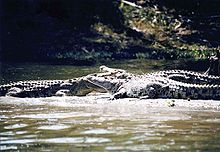
- -14.033333 34.883333 7 Lake Malawi National Park
- -14.833333 35.333333 8 Liwonde National Park — 550 km² of unspoiled forest along the shores of the Shire River. The national park is best approached from the town of Liwonde. A half-hour boat ride up the Shire will show some of the remarkable wildlife of the region, especially hippo's, elephant, and fish eagles.
- -15.909667 34.74275 9 Majete Wildlife Park
- -15.9 35.65 10 Mount Mulanje (Mulanje Massif) — is the highest peak south of Kilimanjaro and a favourite among climbers attempting to reach Sapitwa Peak, the tallest of Mulanje's peaks. Its within the Mulanje Mountain Forest Reserve
- -10.666667 33.833333 11 Nyika National Park - Malawi's biggest national park is on the 1800m high Nyika Plateau
- -13.326111 34.040278 12 Ntchisi Forest Reserve — stunning rainforest in rural, untouched area
See also: African National Parks
Understand [ edit ]
History [ edit ].
At the end of the 15th century, the Maravi Empire existed on the southwestern shores of Lake Malawi as a kingdom by the Chewa people. The slave trade was introduced in the 19th century when the Swahili-Arabs moved into the area to obtain slavery and ivory. One of the first Europeans to visit Malawi was Dr. David Livingstone, a Scottish missionary and explorer who was credited with a leading role in ending slavery in Africa.
Established in 1891, the British protectorate of Nyasaland became the independent nation of Malawi on 6 July 1964. After three decades of one-party rule by Hastings Banda, the country held multi-party elections in 1994 under a provisional constitution, which took full effect the following year. National multi-party elections in 1999 and 2004 elected president Bingu wa Mutharika. When he died in 2012, Joyce Banda (no relation to Hastings Banda) was elected as the first female leader.
Climate [ edit ]
Much of Malawi is plateau, often reaching to 1,000 m (3,000 ft), and the temperature in these highlands is moderate, with the hottest period occurring during the autumn rainy season and the coolest and chilliest in winter. The hottest region in the country is the lower Shire River Valley well south of Blantyre. Temperatures along scenic Lake Malawi are generally warm, but with a cooling breeze, especially in the evenings. Winters (May till July) are dry. The rainy season begins in mid-October to early November and generally runs until March.
Culture [ edit ]
Malawi's people are its greatest asset - friendly, welcoming, colourful and vibrant. It is impossible to visit and not to become engaged with the people, but there are now opportunities to spend time in real villages (including staying overnight) for a first-hand experience of the cultures, traditions and daily life. This is an option pretty much everywhere in Malawi, and one well worth taking.
There's also much to see of Malawi's history, beginning with the pre-history remains of the Karonga district and the Stone Age rock paintings near Dedza. The Cultural & Museum Centre at Karonga is well worth a visit. Elsewhere, the colonial period is preserved in buildings dating from the David Livingstone era and the defeat of the Arab slave trade is well documented in the museums of Blantyre. Among other museums around the country are a Lake Museum at Mangochi, a mission museum at Livingstonia and a postal services museum near Zomba.
Get in [ edit ]

Entry requirements [ edit ]
Nationals of the following countries do not require a visa to enter Malawi for up to 90 days : Antigua and Barbuda , Bahamas , Barbados , Belize , Botswana , Dominica , Eswatini , Fiji , Gambia , Grenada , Israel , Jamaica , Kenya , Kiribati , Lesotho , Malaysia , Mauritius , Mozambique , Namibia , Nauru , Saint Kitts and Nevis , Saint Lucia , Saint Vincent and the Grenadines , Samoa , Seychelles , South Africa , Tanzania , Trinidad and Tobago , Tuvalu , Uganda , Zambia and Zimbabwe . Nationals of Hong Kong do not require a visa for visits of up to 30 days .
Citizens of most other countries may obtain a $50 visa on arrival , but this is not applicable to citizens of Afghanistan , Bangladesh , Burkina Faso , Burundi , Cameroon , Central African Republic , Chad , Egypt , Ethiopia , Iran , Iraq , Kazakhstan , Lebanon , Libya , Mali , Nigeria , Pakistan , Palestine , Russia , Rwanda , Somalia , South Sudan , Sudan , Syria , Tunisia , Turkey , Ukraine , Uzbekistan and Yemen who are required to obtain a visa in advance, which can be applied for at Malawi's embassy in your country. A six-month, multiple entry visa on arrival can also be obtained, which costs $150, and a twelve-month version of the same visa costs $250.
An E-Visa system exists and some Europeans and Australians are required to use it.
By plane [ edit ]
Malawi has relatively few international flight connections, with most travelers connecting through either Johannesburg , Nairobi , or Addis Ababa to fly into Lilongwe or Blantyre .
By train [ edit ]

There are no international trains to Malawi.
By boat [ edit ]
A ferry runs twice a week from Likoma Island to Cobuè and Metangula in Mozambique.
By car [ edit ]
The main road (M1) runs from the northern border (Kaporo) through Karonga, Mzuzu, Lilongwe and finally to Mchinji and is in excellent shape. There is an excellent road from Lilongwe to Mchinji on the Zambian border (120 km).
By bus [ edit ]
From Mozambique, in the south, you can take the bus from Tete (north-west Mozambique ) to Zobwe. After crossing, take another bus from the border to Blantyre . This crossing is quite hectic, and it is closed at night, so you should plan to get there early, and try to keep it cool with all the border-hawkers.
Direct buses run from Lusaka , Zambia to Lilongwe , but is best done in stretches) if 14-20 hours on a bus doesn't sound like your idea of a good time. There is also minibus from Mbeya in Tanzania to the border. From the border in Malawi Side, take a taxi to Karonga . From Karonga bus station, take a bus or minibus to other destinations in Malawi. Bus is cheaper than minibus. The easiest way take direct bus from Dar es Salaam in Tanzania to Mzuzu or Lilongwe .
There are no direct buses from Mbeya to Malawi although scammers in Mbeya bus station will tell you so, and sell you tickets. You must take a bus to the border and walk across.
There has been buses from Blantyre to Harare via Tete in Mozambique. but you will need to get a mozambique visa.
Get around [ edit ]

Compared to its neighbours, the main roads in Malawi are in surprisingly good shape and travel times between major destinations should be reasonable. The volume of traffic is low and most people drive reasonably slowly. Road travel after dark is not advisable as road markings are poor to non-existent and not all cars have headlights. While there are few vehicles travelling at night a very significant number of their drivers will be heavily intoxicated, particularly outside of Lilongwe and Blantyre.
The Malawian police force have roadblocks, checkpoints and speeding checks along many of the major roadways and at the airports. By and large, they are looking for illegal activities and bribes. Expect to be stopped on occasion, particularly if you are clearly not local, and asked where you are going. Fines for traffic offences range from 2,000 MK for poor tyres or faulty lighting, to 8000 MK for speeding, to seizure of the vehicle for licensing/registration/insurance offences. Payment is expected to be made to a bursar at the roadside,and a numbered receipt from a duplicate book should be given. If a passenger in a vehicle being driven by a local the police may question the driver or other passengers in a local dialect in order to establish what can be got from you. You should not have any problems if you are polite and have the correct documentation (passport, driver's licence, permission to use the vehicle, etc.) available if they ask. Before using any vehicle be satisfied that all tyres are in good condition, lights are working (including brake lights) and that you have a road warning triangle and fire extinguisher. Do not leave quantities of food or beverages, toys, etc visible in the vehicle as they will be sought in exchange for passage. Allow extra time for journeys to the airport as the police are aware that people in a rush will pay. Speed checks are often carried out on the roads away from major towns (i.e. at the points where the speed limit is due to increase), and urban speed limits can extend well into rural areas, often for 10-12km outside of major towns.
The wearing of seatbelts is mandatory. Local laws dictate that passengers may not have any limb hanging from a vehicle. Despite many local pick-ups having extra passengers in the cargo area visitors should not do so unless the vehicle has the appropriate additional government documentation allowing same.
Malawi experiences fuel shortages, so stock up in neighbouring countries unless you want to queue for a long time (without actually getting anything) or use the black market - with fuel prices being almost double, even triple, usual prices. If staying in the one area for some time attempt to build a relationship with the forecourt staff in one establishment, but be seen to occasionally purchase small amounts from other outlets. Often staff will give preferential treatment to regular customers in times of shortage.
In rural areas be vigilant of children playing and animals, particularly chickens on the road. While small animals may not damage the vehicle they may cause a family to lose a source of income or nutrition and create a very hostile situation when a demand for payment is made.
- AXA Bus Malawi
Traffic is a major safety risk. Malawi's road network has improved, but many roads are still in poor condition. The country's car fleet is in poor condition and the traffic culture is uncontrolled. Travelling after dark is not recommended. "Thumbing a van on the back of a van is not a safe option. There is no train service.
Fuel shortages can occur from time to time. Motorists should be prepared by buying an extra can of fuel.
Like many other former British colonies, traffic moves on the left in Malawi with most cars being right-hand drive.
Local car rental companies:
Apex Rent-a-Car Malawi . Sedans, 4x4s, buses.
SS Rent-a-Car . Saloons/sedans, 4x4s, 16- and 26-seat buses, motorbikes.
Sputnik Car Hire . 4x4s, buses, trucks.
Many car rentals in Southern Africa do not allow you to enter Malawi with their cars. You might have the best chances if you rent a car in Zambia .
Car rentals that allow you to enter Malawi:
- Kwenda , 17 Samantha Street; Strijdom Park; Randburg, Johannesburg, South Africa , ☏ +27 44 533 5717 , [email protected] .
- Bushtackers , P.O. Box 4225, Rivonia, 2128, Johannesburg, South Africa , ☏ +27 11 465 5700 , [email protected] . Allow you to enter Malawi if you ask by email.
Travelling by boat is surely the most enjoyable mode of getting around in Malawi. The Ilala ferry runs north from Monkey Bay to Chilumba on Fridays at 10:00, arriving on Sunday at 18:30 and returns southbound on the same route, departing Chilumba on Mondays at 02:00, arriving back at Monkey Bay on Wednesdays at 14:00. Prices are rising with every year, but so is the ferry's reliability.
Malawi has a very limited passenger service, with departures about 1-2 times per week between Blantyre and smaller cities in Southern Malawi . No passenger trains serve the capital Lilongwe . All trains are operated by CEAR.
Talk [ edit ]
The official languages of Malawi are English and Chichewa . English is widely spoken in urban areas and by the well-educated upper class, though outside of that, a few words in Chichewa will go a long way. Chichewa is the first language of the majority of the population, and knowing Chichewa will get you by in most of Malawi though in some very remote areas, learning the local tongue might be essential. Locals always appreciate any attempts by foreigners to speak Chichewa and learning at least a few basic greetings would do well to ingratiate yourself to the locals. Tumbuka is the first language for many people in the north of the country. Chiyao is spoken by the Yao people who live mostly in the Southern District of the country. A multi-cultural country, Malawi has over a dozen indigenous ethnic groups, each with its own distinct language. However, even in those areas, many younger people will be bilingual in the local language and Chichewa.
See [ edit ]

Malawi has a massive diversity of beautiful landscapes. The highest peaks in Malawi touch 10,000 ft (3,000 m) while the lowest point is barely above sea level. This range of altitudes in a small area help to make the landscape of Malawi one of the most varied in all Africa. It is generally a green, lush country, with plateaux, highlands, forests, mountains, plains, escarpments and dramatic river valleys.
The Rift Valley is the dominant feature, providing the vast chasm that Lake Malawi fills, and extending to the south of the country following the Shire River that drains the Lake. The flatter areas of the Rift Valley in South Malawi are home to some important wetlands, including Elephant Marsh, down in the Lower Shire Valley.
To the west of the Lake and either side of the Shire Valley in the south is the Central African Plateau. The transition from Rift Valley floor up to the Central African Plateau is characterised by a series of dramatic escarpments, such as at Nkhotakota Wildlife Reserve, a protected area of rugged, unspoilt wilderness. The Central African Plateau itself is gently undulating land between 1,600ft (490m) and 5,000ft (1,500m), with the occasional lake (such as Lake Chilwa) and punctuated by more dramatic hills and forests.
It is the widespread highlands and forests that provide the most impressive of the Malawi's varied scenery. Up where the air is fresh and cool are clear mountain streams, heaths, rolling montane grassland and evergreen forests.
The southern part of Malawi has the best known highlands - Mulanje Massif and Zomba Plateau. The former is a massive wilderness plateau of syenite granite rising from the Phalombe Plains. It has a number of peaks, including the highest in both the country and the whole of central Africa: Sapitwa, at 3,000 m (10,000 ft). The tea estates that stretch west of Mulanje as far as Thyolo, are also wonderfully scenic. Zomba Plateau is not as high as Mulanje, but nonetheless impressive. It is slab-like with a gently undulating plateau top which is accessible by road.
The Dedza-Kirk Highlands extend the rise from the Rift Valley on its western edge between Blantyre and Lilongwe. The northern part of these highlands is marked by the Dedza-Salima Forest Reserve and then the Thuma Forest Reserve. South-west of Lilongwe, the Dzalanyama Forest Reserve covers a range of hills at the border with Mozambique. The Dowa Highlands, north of Lilongwe, have their most notable peaks at Dowa and the Ntchisi Forest Reserve.
The Viphya Highlands - undulating hills swathed in evergreen forests - stretch north-south in north Malawi and reach the edge of the Rift Valley. Finally, in north Malawi is the Nyika Plateau, a rolling whaleback grassland plateau unique in Africa. Much of this highest and most extensive high plateau surface in central Africa is gazetted as the Nyika National Park.
Do [ edit ]

For a small country, Malawi has a quite remarkable array of activities to offer visitors. The magnificent Lake Malawi is a haven for boat activities and watersports, as well as having some of the best freshwater diving sites in the world, right in Nkhata Bay. Eight land-based national parks and wildlife reserves offer all type of safaris in a wide variety of natural wilderness environments. Liwonde National Park, along the Shire River, has hippos (including an albino one!), crocodiles, lions, elephants and even leopards (apparently). The mixed terrain and varied landscapes also provide for excellent outdoor activities, including trekking and mountain biking, particularly in the highland areas. Those seeking cultural experiences are also well served by sites of historical interest and simple village visits to meet the ever-smiling Malawians in their daily life. You can visit the Carlsberg factory in Blantyre, climb Mount Mulanje (a series of high hills, mountains - making a good trek), drive up or climb Zomba Plateau, go horseback riding in Kande or Nyika, or just relax on the beaches of Cape Maclear.
Specialist tours/activities include yoga holidays, tea factory tours and art safaris. Pottery classes are available at two centres in Dedza and Nkhotakota. In the summer months of Malawi (September/October) there is the Lake of Stars international music festival on the beaches of Sunbird Nkopola Lodge in Mangochi. This is a good festival, where you can relax in the sun on the beach having a few drinks and listening to some good music. Camping is the prominent form of accommodation, however many people do chose to stay in Sunbird Nkopola rooms themselves, or in rooms or cottages of nearby lodges.
Buy [ edit ]
Money [ edit ].
The local currency is the Malawi kwacha , sometimes abbreviated " MK " (ISO international currency code: MWK ). The currency is freely convertible (but impossible to get rid of outside of the country). Coins of Malawi are issued in denominations of 1, 5 and 10 kwacha. Banknotes of Malawi are issued in denominations of 20, 50, 100, 200, 500, 1,000, 2,000 and 5,000 kwacha.
"Hard" foreign currencies (forex) will also be accepted by almost everybody, particularly for larger purchases. In order to reduce cost of living, expats living in Malawi could consider specialized FX transfer by companies focusing on global reach such as the ones found at MTC.com .
The central bank devalued the kwacha by 44% in Nov 2023. Many of the prices in our Malawi articles may be out of date.
All foreign currency must be declared upon arrival
There is a black market for foreign currency in Lilongwe operated by the people standing outside Metro store (opposite Spar/Shoprite). In Nov 2023, they were giving 1,950 kwacha to the US dollar. Get the taxi to stop on the drive from the airport.
You can swap Malawian kwacha to Zambian kwacha at the border, either at the banks or on the black market too.
Larger foreign notes are favoured and can get much higher rates. At times, it can be easier to not even go to the black market and simply make purchases with the foreign currency.
Credit cards: Mastercard and Visa and are accepted by larger hotels and large supermarkets.
You can withdraw cash using a Mastercard or Visa card at many ATMs of the Standard Bank, Ecobank, National Bank of Malawi . Ecobank ATMs have no withdrawal fee for overseas cards.
Travellers' cheques can no longer be used.
Eat [ edit ]
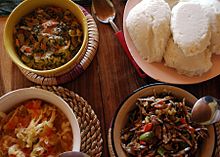
Traditional Malawian food revolves around one staple, maize , served in one form, nsima (n'SEE-ma). Nsima is basically a type of thick porridge, rolled into balls with your right hand and dipped into a variety of stews known as relishes . Those who can afford them eat relishes of beef, chicken or fish, but the many who can't make do with beans, tiny dried fish ( usipa ), pumpkin leaves ( chibwabwa ) and other vegetables. At breakfast, nsima can be served watered down into a soup, maybe with a little sugar. Local restaurants will serve nsima and relish for less than MK500.
Food options in the major cities of Lilongwe and Blantyre are good. Fast food — to include burgers, pizza, and fried chicken — is very popular in Malawi. For sit-down meals, ethnic eateries (thanks to a significant ex-pat population) are popular. In many restaurants, pork products are not served to accommodate the Muslim population.
Outside the larger cities, however, you might be a little underwhelmed with food options. Along the major roadways, you will find "tuck shops" featuring packaged cookies or Take Away Meals — meat pies or sausage rolls, for instance — which may or may not satisfy you.
Finally, in terms of hygiene outside the major cities, you are unlikely to find a proper washroom with running water. You will probably be given a bowl of water, a piece of soap, and a (damp) towel. Therefore, some travellers bring small bottles of anti-bacterial hand soap with them.
Drink [ edit ]
Soft drinks [ edit ].
A traditional local drink worth trying is maheu , a somewhat gritty and vaguely yogurty but refreshing beverage made from maize meal. Factory-produced maheu is sweet, comes in plastic bottles and is available in a variety of flavours including banana, chocolate and orange, while home made versions are usually unflavored and less sweet.
The variety of soft drinks in Malawi is very popular - there's Coke, Sprite, Tonic, Ginger Ale, Soda Water, Cherry Plum, Cocopina and the very tasty, sugary Fantas (coming in Orange, Grape, Exotic, Passion and Pineapple flavours). These are manufactured by SOBO, the glass bottles are on a deposit system. Expect to pay MK50 extra per bottle unless you bring some 'empties' with you.
Alcohol [ edit ]
The only beers you will generally find are brewed in Blantyre by Carlsberg , and its products are available in restaurants and stores throughout the country. A normal Carlsberg is known as a 'green', but the company also produces Special Brew, Stout, Classic, Elephant, Light and Kuche Kuche. You can also buy imported drinks such as Heineken, Kronenbourg, Smirnoff Ice, Bacardi Breezer and some ciders in certain bars. Malawi also produces its own spirits - notably Malawi Vodka, Malawi Gin, Malawi Rum, Gold Label Brandy and the cane spirit Powers. Malawi Gin & Tonic is a very nice, popular expat drink in the country.
Sleep [ edit ]
Western-standard hotels can be found in Blantyre , Lilongwe , Zomba and Mzuzu , as well as along the shores of Lake Malawi. The Lake Malawi resort hotels cater primarily to international tourists.
There are Backpacker Hostels in many places in Malawi with dorm beds from US$10 per person.
There are high-level five-star resort hotels in some rural areas charging western prices.
Learn [ edit ]

Malawi's largest tertiary education structure is the University of Malawi which is made up of Chancellor College in Zomba , Blantyre Polytechnic in Chichiri , and College of Medicine. Bunda College of Agriculture and Kamuzu College of Nursing in Lilongwe. There is also Mzuzu University in the northern part of Malawi.
Stay safe [ edit ]
Malawi has been known for years as "The Warm Heart of Africa", and Malawians are known for their friendliness and hospitality. Malawi is not known as a particularly dangerous travel destination for western tourists and expatriates. Muggings and robberies have occurred in the larger cities, most especially Lilongwe, as well as in some notorious places along the main tourist routes. It is advisable to avoid walking alone at night. If you go out for the evening, make sure you know how you're going back home. Car-jackings happen occasionally so be sure to keep windows shut and doors locked during evening and night journeys (though night driving is not advised - most cars have broken headlights and Malawians tend to walk in the middle of the road at night) and exercise reasonable caution you would anywhere. Roads are less safe because many drivers are unlicensed and inexperienced and many vehicles are not inspection-ready; there is also the factor of drunk driving, especially in the evenings, so be cautious. However even half the taxi drivers you will get at night will be drunk.
There are a lot of pickpockets operating in nightclubs and bars. Just exercise caution, don't bring too much money and cameras, etc.so don't bring hordes of cash with you.
Homosexuality is prohibited by the law, and LGBT couples should exercise discretion when travelling to Malawi. It took a presidential pardon to release a gay couple who were arrested for homosexuality and sentenced to 14 years of hard labour.
Swimming in water bodies can be dangerous for crocodiles and hippos.
Stay healthy [ edit ]
As with its neighbouring countries malaria can be a problem. The lake is freshwater and is prone to bilharzia , especially in the Cape Maclear area. Symptoms of bilharzia can take months to surface. If you think you've been exposed to it you can get a very cheap pill from the local pharmacists that will kill it before it even shows its face. It's a good idea to take care of this before leaving Malawi, as it will be much more expensive back home.
The adult HIV prevalence in the country is at 14% or 1 in 7 adults. Do not have unprotected sex. Do not use injecting drugs.
Tap water in major cities like Lilongwe, Blantyre, Zomba and Mzuzu is generally safe. Ask at the lodge/house you're at. Travellers with weaker stomachs should avoid this drinking water. Bottled water is plentiful in all the major shops.
Dogs, cats and other animals can spread rabies.
Respect [ edit ]

Malawi has both patriarchal and matriarchal ethnicities and cultures. In the cities, men tend to be more respected than women, but the reverse might be true in the rural villages depending on ethnicity. Whites tend to be well-respected, a holdover from colonial times, but this is largely a Malawian's way of being courteous. Accept their hospitality. They are an exceptionally friendly people.
Malawians, especially those from very rural areas where they don't see many whites, can be quite curious when they do come upon a white traveller. To a Western mindset, this might be interpreted as unnecessarily staring at you or talking about you in front of you. Be prepared to be greeted by kids yelling mzungu, mzungu! and to answer lots of questions about yourself. Even relatively mundane items like mechanical pencils can draw a crowd of onlookers.
Malawians are in general extremely courteous, and a part of that courtesy is shaking hands, speaking softly, and referring to travellers and others with respect. Malawians avoid rudeness. It is common for Malawi men to hold hands when they've gathered together to chat, and this shouldn't be given a sexual interpretation when it is encountered.
Culturally, women should not wear shorts or mini-skirts, especially when travelling outside the lodge or camp. A woman in shorts or a short skirt is considered to be provocative, as well as rude. Many female visitors wear wraps that are available in the stores and markets of major cities. These are generally made of bright, colored patterns and can be extremely attractive. Low-cut tops on women, while discouraged, are not nearly as provocative. Men in the cities tend to wear slacks and not shorts, as shorts are generally worn only by school-age children, so when a man wears shorts it can be viewed by Malawians as rather silly.
Finally, when meeting a Malawian — even to ask a question — you should always say hello and ask how they are. Properly greeting a Malawian is very important. They are uncomfortable with the Western notion of simply "getting to the point." Courtesy is a must, at all times, because not to be courteous is to show disrespect.
Connect [ edit ]
Gsm [ edit ].
The two main mobile network providers are Airtel and TNM . For 3G TNM has better coverage with Airtel only really covering the largest cities. SIM cards are available for 200 MK.
Other [ edit ]
- Embassy of the Republic of Malawi to Belgium, the Netherlands, Luxembourg, Switzerland and France
Go next [ edit ]
- South Luangwa National Park — Kiboko Camp and some other travel agencies run roundtrip safaris from Lilongwe to this fantastic national park in Zambia .
- Has custom banner
- Has map markers
- Marker with Wikivoyage article but no wikilink
- Has Geo parameter
- Southern Africa
- All destination articles
- Usable countries
- Usable articles
- Country articles
- Pages with maps
Navigation menu
13 things to know before traveling to Malawi

Apr 21, 2023 • 5 min read
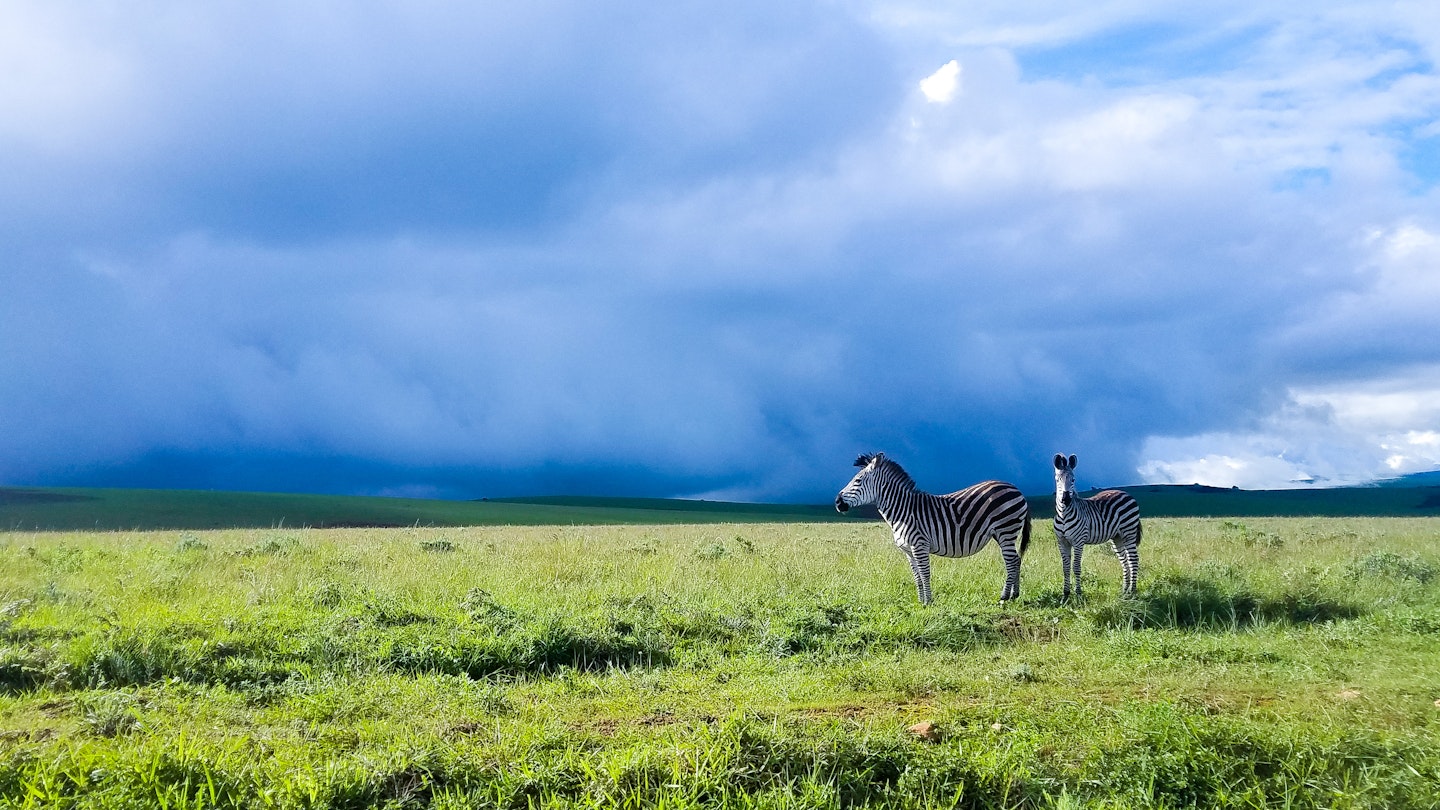
Get prepared for your visit to Malawi with these essential tips © Tukio / Shutterstock
Travelers to Malawi will probably find themselves forming friendships and connections quickly, as Malawians are generally keen to greet and engage with visitors.
This is a developing country, so you may be solicited for money, especially in the towns. A good way to contribute is to find local social enterprises that are working for change and provide either financial support or do some volunteering. Some of the best lodges run projects themselves or can connect you with good programs nearby. If you would like to make a donation for nature, consider the excellent Lilongwe Wildlife Trust .
Here are more things that you should know before visiting Malawi.
1. The rainy season is best avoided
Pick your time to visit Malawi carefully. The rains come from November through to April and can make some roads dangerous or even impassable. After the rains, the country is at its most lush and beautiful, though wildlife spotting is easier in the hotter months of September and October, when vegetation is sparser.
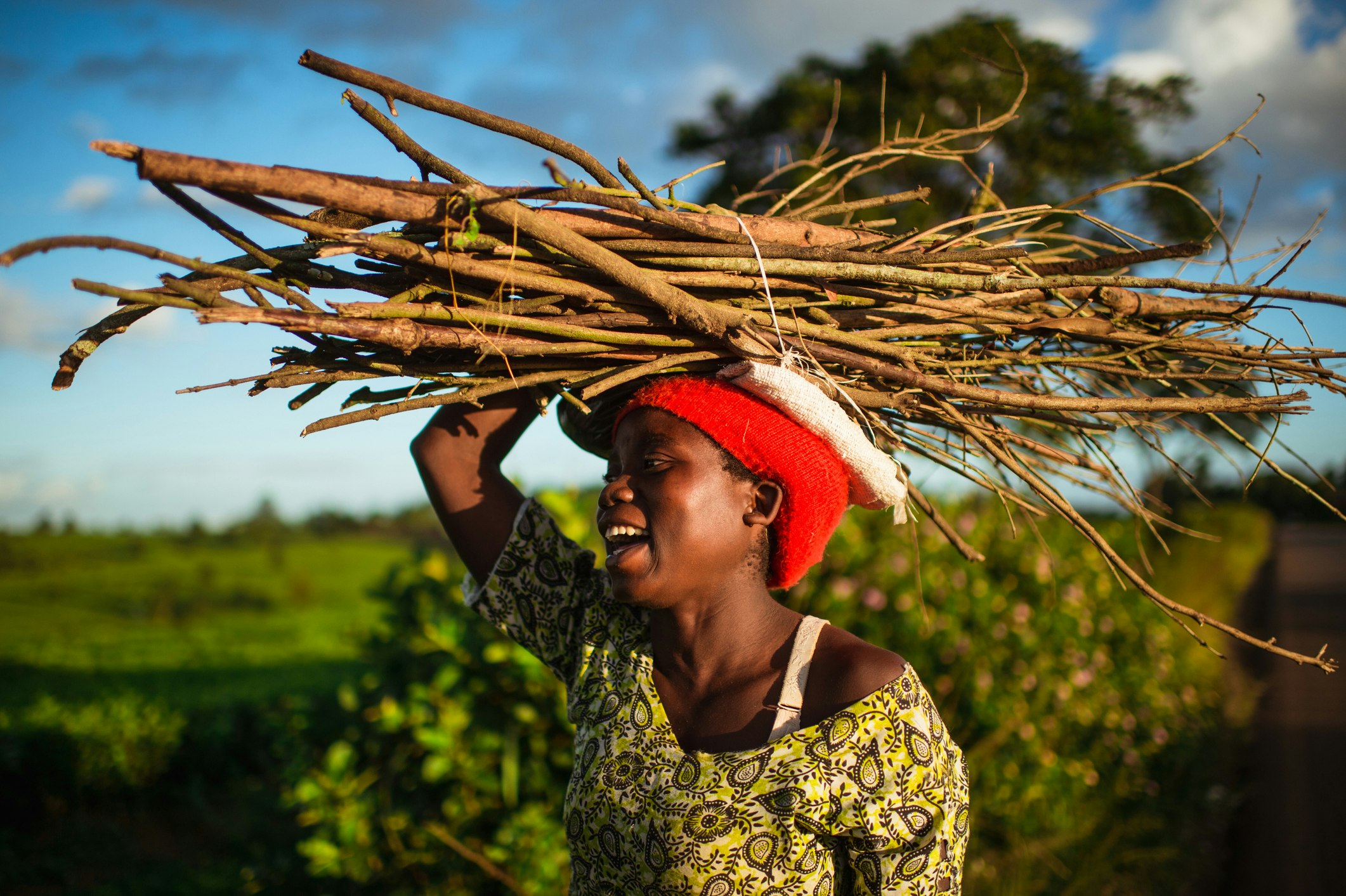
2. Learn the lingo
Learning a few Chichewa phrases before you go will help smooth your travels and delight your hosts in Malawi. A few good phrases to know are moni (hello), muli bwanji (how are you?), zikomo (thank you) and dzina langa ndi (my name is).
3. Get immunized
Make sure your immunizations are up to date, including Hepatitis A and B, rabies, typhoid and yellow fever. Take your yellow fever document with you, as you may need to show it upon arrival in Malawi. Consult your doctor about malaria drugs, and ensure you leave enough time because you will need to start taking the drugs several days before your arrival in Africa. You may want to bring a mosquito net with you to hang over your bed. You can donate it when you leave the country, perhaps to a worker at your accommodations or to a local school.
4. Take time for greetings
The culture in Malawi is to greet and ask about each other’s health and sometimes also the health of immediate and even extended family. If you can do this in Chichewa, so much the better. People love to talk politics, and often it is the good conversations, full of humor and warmth, that are the abiding experience of Malawian travel.
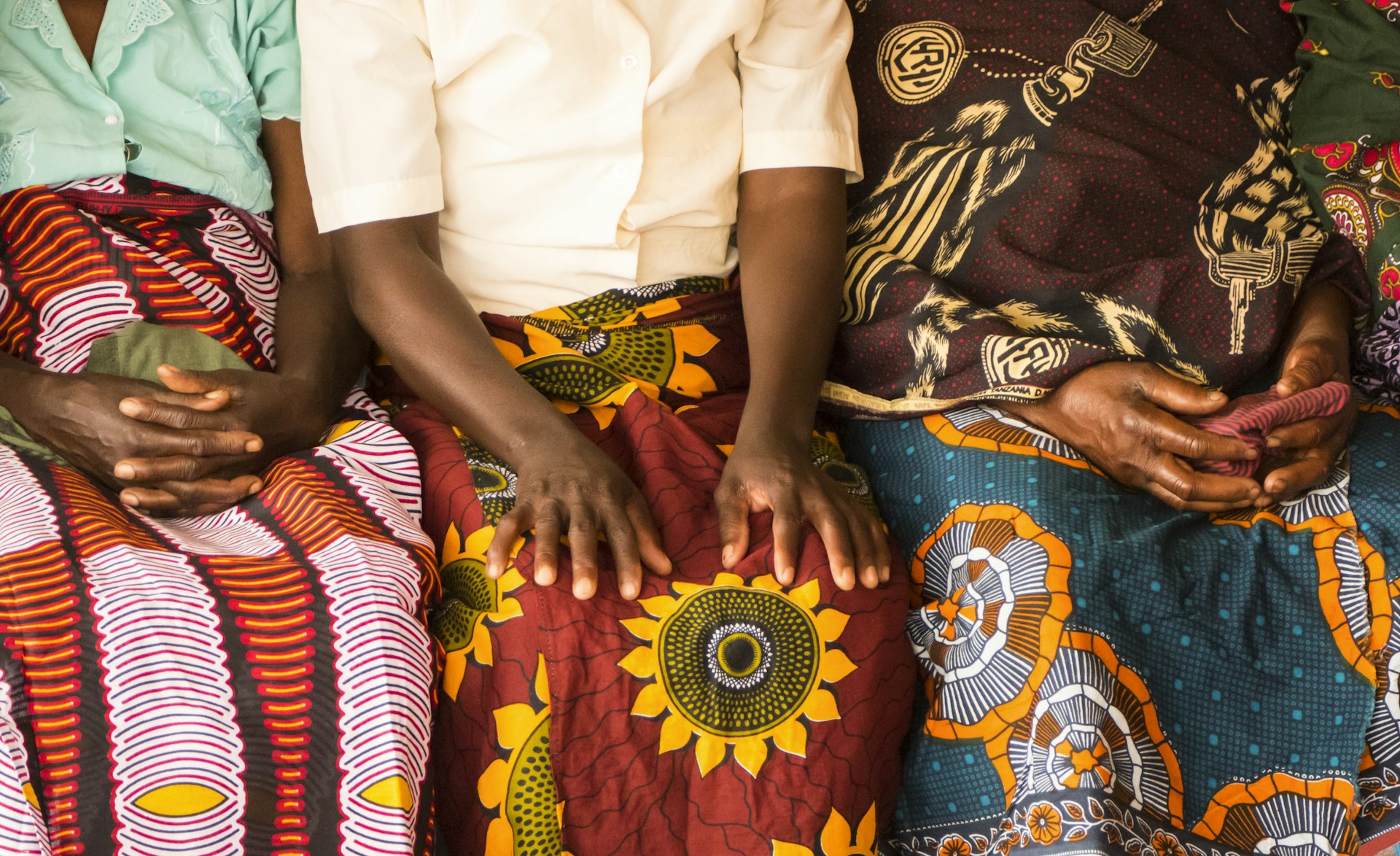
5. Pack modest clothes and buy a chitenge
During the President Hastings Banda years (1966–94), all sorts of sartorial laws were in place, with a ban on flared trousers and women instructed only to wear long skirts, and never pants or shorts. Those days are long gone, and many urban Malawians have a fabulous fashion sense, combining Western street style with Afro-chic. Fabric is affordable and beautiful in Malawi, and local tailors can quickly copy your existing garments or create clothes to your designs.
Malawian culture is different and more conservative in remote villages, where women usually wear a blouse, headscarf and a length of chitenge cloth wrapped around their bodies. You will get a warmer welcome if you dress modestly, covering your chest and legs, particularly so in predominately Muslim settlements. Women travelers can carry chitenge cloth to wrap around their waist or chest for village visits. The cloth is available in any market and makes a great souvenir to take home.
6. Don't haggle
Malawi does not really have a bargaining culture; many prices are fixed. You may be charged slightly more than a local in the markets, but it’s unlikely that you will be badly ripped off because honesty is a key value in the country, even among people who are scraping only a tiny profit from their goods.
7. The LGBTIQ+ community is not supported
Homosexuality is illegal in Malawi, though this is unlikely to be an issue for foreign travelers. Still, because of the legal situation, open discussion of homosexuality may make Malawians uncomfortable.
8. Get a room
Flamboyant physical displays of affection between couples are not the norm in Malawi and may cause offense.
9. Don’t be tempted by Malawi Gold
Malawi’s cannabis may be a temptation for travelers, but drug taking and possession are illegal and carry punitive sentences.
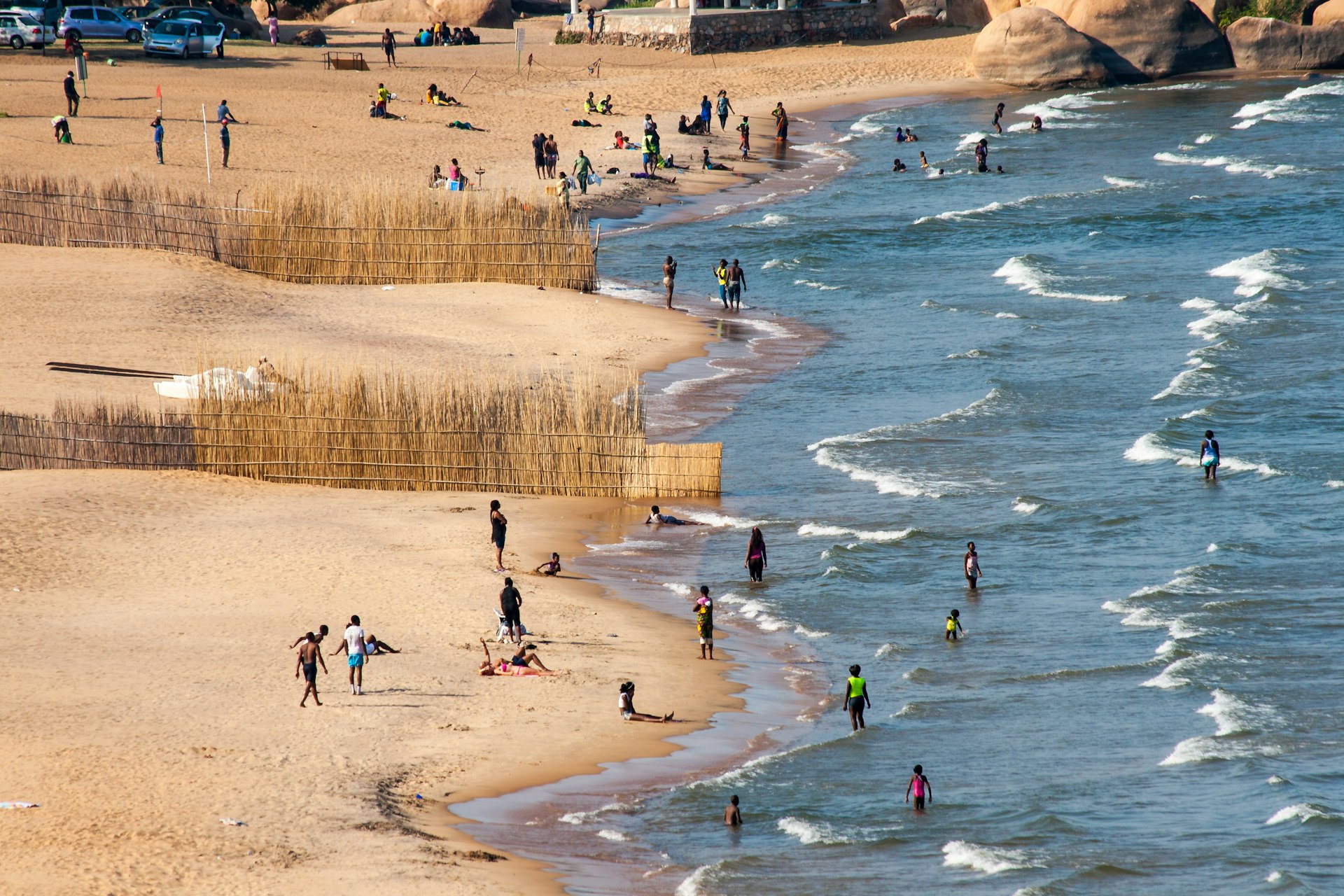
10. Avoid driving at night
The greatest danger in Malawi is likely to be on the roads , where speeding and wildly passing cars are common. Driving at night on the unlit roads should be avoided altogether. When planning your trip, consider using Malawi’s coach system and the lake ferry rather than driving yourself. Hiring the services of a driver/guide also takes the stress out of Malawi travel.
11. Bring a water filter
Malawi does not have recycling facilities, so bring a portable water-filter bottle rather than buying plastic water bottles and contributing to the country’s waste problem. You’ll need to drink plenty of water to stay hydrated in the heat.
12. Use a condom
Rates of HIV in Malawi are high, and the illness has had devastating effects. If you have sex with a new partner, whether they're Malawian or a fellow traveler, use a condom.
13. Test for bilharzia when you return home
Bilharzia is a parasitic illness carried by freshwater snails, and it’s wise to get a test for this disease six weeks after you return from Malawi. The disease can be picked up if you swim in Lake Malawi, especially in a reedy area. Bilharzia is easily treated, but if left undiagnosed, it can cause fever, rashes, stomach pain and extreme fatigue. Don’t let this put you off swimming in the lake, which is one of the great pleasures of a visit – just be sure to test on your return.
This article was first published March 2022 and updated April 2023
Explore related stories
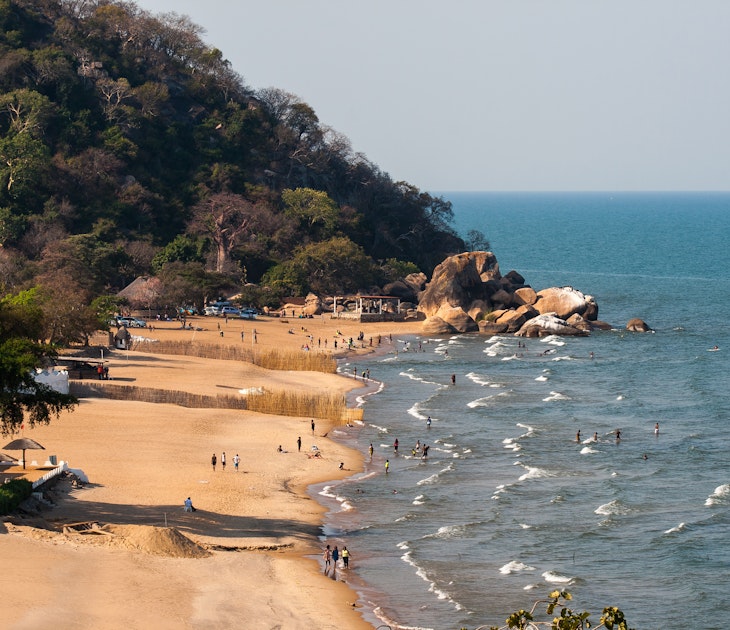
Tips & Advice
Apr 18, 2023 • 2 min read
Most visitors to Malawi will need to get a visa in advance of travel. Here's what you need to know.
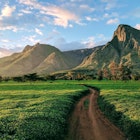
Apr 18, 2023 • 8 min read
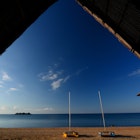
Mar 15, 2023 • 6 min read

Oct 28, 2019 • 1 min read
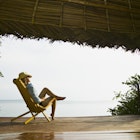
Dec 5, 2023 • 4 min read
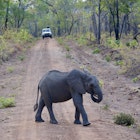
Apr 20, 2023 • 5 min read
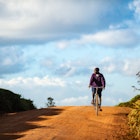
Apr 19, 2023 • 5 min read
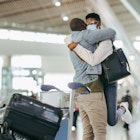
Dec 24, 2021 • 2 min read
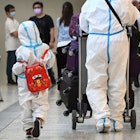
Nov 30, 2021 • 6 min read
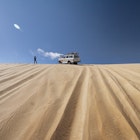
Nov 30, 2017 • 7 min read
9 Top Things to Do in Malawi, Africa
:max_bytes(150000):strip_icc():format(webp)/anoukmarrakech-56a373305f9b58b7d0d20299.jpg)
Michael Runkel / robertharding / Getty Images
Malawi is a relatively undiscovered country to visit in southeast Africa with plenty of natural beauty and wildlife. The stunningly beautiful and huge Lake Malawi, the third-largest lake on the continent is located in Malawi. Plus you'll find bustling markets and very friendly people—hence the country is referred to as the Warm Heart of Africa.
The country shares land borders with Mozambique , Tanzania , and Zambia . It is one of the world's least-developed countries, but you can still fly into a few international airports, and it boasts beautiful national parks, pine forests, white sandy beaches, and reserves full of wildlife. And unlike some other countries, you won't have to compete with hordes of tourists to see all the natural beauty and wildlife.
Explore Lake Malawi (South)
Lake Malawi is a beautiful freshwater lake that takes up nearly a third of the area of landlocked Malawi. Blessed with golden beaches and incredibly colorful varieties of fish, the lake offers very rewarding snorkeling and diving.
The southern end of the lakeshore is very popular due to its proximity to the commercial capital, Blantyre. There are numerous bays to choose from and accommodations run from simple campsites and cottage rentals to the more luxurious Makakola Retreat . Cape Maclear on the southern end is a mecca for snorkeling and other water sports. (Note there is a risk of contracting the parasite bilharzia ; make sure you know the symptoms of the disease and how to treat it.) At Monkey Bay, on the southern tip, you can catch the MV Ilala ferry to cruise up the lake to Likoma Island and the northern end.
Hike Mulanje Mountain
Ariadne Van Zandbergen / Getty Images
Mulanje Mountain, also referred to as Mount Mulanje, is in southern Malawi 65 kilometers (40 miles) east of Blantyre; its highest peak Sapitwa reaches just above 3,000 meters (nearly 10,000 feet).
There are plenty of hiking routes to choose from to enjoy this mountain, with simple huts at the end of each one. This is a wonderful hike for families, with lots of streams and peaks to explore. You should spend at least two nights on the mountain. The Mountain Club of Malawi has good route information as well as details on fees and more. If you join the club, you can use their cooking facilities in the huts. Enjoy the delicious smell of Mulanje cedar in the fireplace.
Most hikers will start out from Likhubula, so a night at Likhubula Forest Lodge is convenient to get an early start. The best time to climb Mulanje is between May and October.
Take the Ferry to Likoma Island
Per-Gunnar Ostby / Getty Images
Likoma Island is actually in Mozambique waters but is still a Malawian territory. It's home to a huge cathedral built in the early 1900s. The island has several lovely beaches with excellent eco-friendly resorts including Kaya Mawa , and some budget accommodation as well (check out Mango Drift ).
Likoma is a peaceful spot and there are just a few cars on the island. You can take some nice walks inland to visit villages, the local market, or kayak around the island. There's a diving school that offers certification at inexpensive rates. Dance troupes from other islands gather regularly for an entertaining "dance-off."
Getting to the island is half the fun, especially by boat ; the MV Ilala passenger vessel stops here weekly. Confirm schedules and details with The Malawi Shipping Company. There are scheduled flights from Lilongwe as well as charters available.
See Hippos and Elephants at Liwonde National Park
Marc Henrion/ Getty Images
Liwonde National Park is Malawi's premier wildlife park with a lovely setting along the banks of the Shire River, where you can view hippo pods in the water and large herds of elephants on the side enjoying a drink and a splash. The park is 220 square miles and boasts impressive birdlife—you're very likely to see African fish eagles displaying their skills as well as the rare Pel's fishing owl.
Most people who make the trip stay at the luxurious Mvuu Lodge next to the Zambezi National Park. The best time to visit is during the cooler dry season from June to August, as Liwonde can get very hot and humid during the rains.
Cruise on the MV Ilala
The large MV Ilala ferry crosses the lake every week (about a 300-mile trip). The vessel offers cabin class, first class, second class, and economy class facilities, along with restaurants and bars. The Ilala makes regular stops for passengers and freight along the way, including the lovely Likoma Island. You can get off at any point, or sail the whole route back to the starting point of Monkey Bay (southern lakeshore).
Book your journey through a travel operator, or buy a ticket at the point of departure. The Ilala does not always sail to schedule, so be flexible. Also, note this is not a luxury cruise. You'll be sharing the boat with hundreds of passengers and freight, but it's a classic African adventure.
Catch the View From the Zomba Plateau
Ian Cumming / Getty Images
Zomba Plateau offers incredible views, waterfalls, dams filled with trout, and a lovely respite from the heat. The 6,000-foot plateau is located in Zomba, the lively former capital of Malawi. Most visitors will spend a day or a couple of nights and enjoy hikes along wooded paths; a favorite view is the "Queen's View." You can take horse rides down nice trails from the long-established Plateau Stables . The best way to get up to the plateau is by car or taxi; it's a long steep walk otherwise, and the rewarding hikes are really at the top of the mountain anyway. The nicest place to stay is the Sunbird Ku Chawe Inn at the mountain's edge.
Lake Malawi (North)
Malawi's northern side is much less developed than the southern shore. Less populated in general, the north is also chillier during the dry season (June through August), but perfect when it's hot. Towns like Livingstonia and Karonga also offer a dash of history and culture to entice you away from the beach.
Nice places to stay include Nkhotakota , with plentiful wildlife, or Nkhata Bay , a bustling town with a craft market (check out Chikale Beach). Additional options are the Ngala Beach Lodge near Dwangwa; Kande Beach between Dwangwa and Nkhata Bay; and Chintheche Inn, the hub for the Root to Fruit initiative which has planted over 250,000 trees in the area.
The beloved Lake of Stars music festival is held annually on the northern lakeshore in Nkhata Bay district.

Stay at the Nyika National Park
Just over 50 years ago, the northwestern part of Malawi—an area of 1,250 square miles known as the Nyika National Park—was so unknown to the British (who were in charge at the time), that they sent explorer Laurens van der Post to report on it. He turned his mission to this vast escarpment into a best-selling book " Venture to the Interior, " describing the beautiful high rolling hills of grasslands dotted with zebra, antelope, orchids, and butterflies that make Malawi's largest national park well worth visiting. Hiking, mountain biking, and horse riding are the principal activities here.
Families can rent cottages and suites at Chelinda Camp where rustic meals are served while dining by a fireplace.
Visit the Capital, Lilongwe
Lilongwe is Malawi's capital, a pleasant enough city where you'll find embassies and government department. The population is smaller than Blantyre, just under one million people.
The New Town, spread out with modern office buildings and residential areas, is to the north. The Old Town on the south is more lively, with a really great market where you can buy everything from bikes to vegetables to fans. Just watch your valuables here and enjoy a little bartering. The city is a good place to regroup if you've been on the road for a while, offering many accommodation options and some decent restaurants in both the Old Town and the New Town.
The Lilongwe Wildlife Center , housing nearly 200 rescued wild animals, is one of several worthwhile attractions in the capital. Some of the embassies and cultural centers host local art shows; check local papers for information.
Malawi Facts and Information
The Best Beach in Every State
The 8 Most Adventurous Things to Do in Malawi
Top 8 Things to Do in Mozambique
12 of Africa's Best Beach Destinations
5 of the Best African Boat Tours and Safaris
The Best Places to Go in Southern Africa
The Top 12 Things to Do in Ethiopia
15 Best Things to Do in Rwanda
8 Top Things to Do in Tobago
13 Amazing Trips to Take Before You Turn 40
Great Summer Family Trips in the USA
The Top 11 Things to Do in Bahrain
Top Things To Do in Banff
20 Top Things to Do in Diverse India
Best Backpacker Destinations in Africa
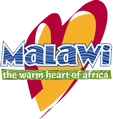
- Login or Register
Department Of Tourism

- Initiate and coordinate development, implementation and review and of key strategic documents e.g. National Tourism Policy, Tourism Strategy, Marketing Strategy, Masterplans
- Coordinate development of annual work plans and budgets (Other Recurrent Transactions and Development Budget Part I & II)
- Initiate development of tourism projects
- Initiate, facilitate, implement and evaluate bilateral and multilateral agreements in the field of tourism
- Facilitate corroboration / cooperation with other Government Ministries, Departments & Agencies
- Coordinate development of organisational and sectoral human resource development strategy and plan
- Facilitate, promote, approve and monitor tourism investment projects
- Monitor organisational and sector performance
- Prepare monthly Expenditure plans
- Prepare monthly, quarterly and annual tourism reports
- Collect, collate and analyse tourism (occupancy and other) data
- Conduct Tourism Research
- Coordinate Tourism Projects and development partner consultancy work
HOW TO APPLY FOR A TOURISM DEVELOPMENT CERTIFICATE
There is need to submit your application to the Department of Tourism with the following attachments;
- Project proposal/business plan
- Proof of land ownership
- Certified architectural drawings (by City/local authorities)
- Certificate of Business registration
- Environmental Impact Assessment report – in other cases
List of strategic documents attached:
- National Tourism Policy
- Investor Pitch – National Tourism Investment Masterplan
- 2019 Domestic Tourism Survey Report
- 2019 Annual Tourism Report
- 2020 Annual Tourism Report
- Malawi 2020 Tourism Development Strategy
- Eco-Tourism Strategy
- Gazetted goods – Duty waiver
MARKETING SECTION The Marketing section is responsible for enhancing the visibility of Malawi as a tourist destination both domestically and internationally, through;
- The Malawi Tourism Marketing Framework 2017, and the Domestic Marketing Strategy (Draft) 2018-2022
- The Tourism and Hotels Act, tourism marketing levy was introduced and this consists of money paid from a portion of the service charge levied on guests in hotels and restaurants.
- the Establishments that are supposed to pay tourism levy include all Tourism Enterprises as provided for in the Tourism and Hotels Act of 1968 as amended and the Tourism Regulations.
- The fund that was set up to finance the marketing of Malawi’s tourism facilities and attractions within Malawi and abroad and in so doing ensuring the fullest possible utilization.
KEY FUNCTIONS OF THE MARKETING SECTION
- Develop and implement yearly Marketing plans through an advisory Tourism Marketing Committee.
- Develop tourism promotional materials and collateral.
- Undertake domestic, regional and international promotional activities.
- Facilitate the work of Public Relations and Marketing Representatives in key source markets
- Conduct tourism marketing research.
- Conduct sensitization and awareness campaigns.
- Undertake Tourism Levy enforcement
STANDARDS & SAFETY SECTION The Standards & Safety section undertake duties on behalf of the Tourism and Hotels Board (THB). It ensures tourist safety and satisfaction with the product through quality assurance.
FUNCTIONS OF THE TOURISM AND HOTELS BOARD
The main function of the board is to control and regulate the tourism industry;
- granting licences
- consent to transfer of licences
- vary, cancel or suspend licences
- classify or reclassify hotels
FUNCTIONS OF THE DEPARTMENT OF TOURISM UNDER THB
- Recommend to the minister on the required operating standards
- Conduct sensitization campaigns
- Sets and administers operating standards for all tourism enterprises (regulations)
- Enforce inspection and licensing of tourism enterprises in liaison with the Tourism and Hotels Board (licensing)
- Classify and grade tourism accommodation units in liaison with THB ( star grading)
Some of the duties of the section include;
- To be advisors on issues pertaining standard operating procedures and minimum standards
- To register, classify, inspect and grade various tourism enterprises
- To collect and maintain database of tourism enterprises
Licensing Process
For an establishment to be given a tourism license, it has to be registered with the register of companies and Malawi Revenue Authority. Then the operator has to collect and fill in a license application form from the Department of Tourism, after submission of the form to the Department, the establishment undergoes an inspection to ensure that it meets the minimum requirements / standards stipulated in the Tourism and Hotels Act, if satisfactory the unit is recommended to be licenced and if not the establishment is recommended to be re-inspected after either 30, 45, 60 or 90 days depending on the findings of the inspection upon Boards approval. However, the establishment is recommended for advisory or closure if the conditions are worse pertaining to the required minimum standards.
Licensing applies to:
- All types of accommodation units
- Restaurants
- Hunting operators
- Tour operators
- Travel agents
- Conference organizers (event management organizations)
- Incentive travel organizers
- Photographic and other safari operators
- Wildlife reserves
- Sanctuaries
- Art Galleries
- Cultural villages
- Kayaking boats
- Horse riding
- Scuba diving
- Hiring of air crafts or Bicycles/motor coaches
- Tourism training institutions.
- Managers of Hotels and Restaurants.
Grading Process
- An establishment that wishes to be graded collects an application form from the Department of Tourism, once filled the applicant shall return the forms to the Department. The Department takes a maximum of 3 weeks before the property is assessed.
- Application fee depends on the number of stars a property is applying for, each star is Mk100,000.00
- A team of assessors is assembled. Assessment takes at least three days for a proper evaluation of the accommodation unit
- Total score for each assessment area is recorded in the assessment form.
- A report shall be submitted to the Licensing and Standards Advisory Committee
- Endorsement by Tourism and Hotels Board
BENEFITS OF GRADING
- Use and access to Marketing tools such as: Accommodation guide and website
- Positive public relations: good PR from DOT to raise profile of units.
- Display of Tourism and Hotels Board plaque
- Use of Grading logo and insignia on all marketing materials.
- Graded units will receive priority in all DOT marketing initiatives.
- Industry recognition
LIST OF CURRENT GRADED UNITS IN MALAWI
LIST OF ATTACHED DOCUMENTS
- Licencing application forms
- Grading application form
- WTTC health and safety guidelines
- Inspection checklist
- Registration
From the moment I crossed the Malawi border I knew … ‘The Warm Heart of Africa’ had claimed another victim, love-struck and powerless to resist the tranquil charms of this most welcoming of countries. Philip Briggs , author of Malawi: the Bradt Guide
Malawi is one of Africa’s most underrated travel destinations. Indeed, many travellers who arrive on the continent barely aware that Malawi exists come to regard it as their favourite African country by the time they return home. Malawi’s inherent likeability has earned it several nicknames – ‘Land of the Lake’, ‘Warm Heart of Africa’, and ‘Africa for Beginners’ – that go a long way to summing up its winning charms. Few countries are so dominated by a single geographical feature. Lake Malawi, enclosed by sheer mountains and edged by a seemingly endless succession of sandy beaches, follows the dramatic contours of the Great Rift Valley for a distance of 585km, accounting for more than 15% of the country’s surface area.
There is much truth in the phrase ‘The Warm Heart of Africa’. Not only do Malawi’s climate and lush vegetation conform effortlessly to every stereotyped image of tropical Africa, but the people exude a laidback warmth that make visitors feel instantly at home. And ‘Africa for Beginners’? Well, certainly, this compact, cheap and hassle-free country would provide a great introduction to Africa, offering a rich variety of attractions suitable to families, honeymooners, wildlife lovers and hard-core backpackers alike. The lake is the indisputable focal point of Malawi’s tourist industry. Backpackers gather in their hundreds at lakeshore villages such as Cape Maclear and Nkhata Bay, while a host of more exclusive retreats cater to higher paying tourists. But there is more to Malawi than a lake, including accessible national parks teeming with wildlife, ancient rock art sites, forests alive with tropical birds, and hiker-friendly mountains such as Nyika and Mulanje.
Food and drink in Malawi
The staple diet in Malawi is nsima , a stiff porridge made from pounded maize meal boiled in water. Few travellers develop a taste for nsima, so it is fortunate that most local restaurants also serve rice and potato chips (or occasionally cassava or sweet potato chips).
At tourist-class hotels and restaurants in the major towns, you can eat food to international standards at a very reasonable price – there are few upmarket restaurants in Malawi where you can’t eat well for under US$10 for a main course (though better restaurants in Lilongwe and Blantyre might be more like US$15). Local restaurants tend to serve a predictable and somewhat dull menu of beef (nyama ngombe), chicken (mkuku) or fish (nsomba) with chips or rice or nsima, but are very reasonably priced at anything from US$2 to US$4 for a starch-heaped plate, often accompanied by a sharp-tasting dollop of stewed cassava or pumpkin leaves (chisisito), or a heap of stewed beans. Popular fish include chambo (a type of tilapia), kampango (a type of catfish) and mpasa (a large cichlid with dark flesh that is often referred to as lake salmon). The most widely available fish in Malawi is usipa, a tiny fish that is generally sun-dried after it is caught.
Restaurants
At tourist-class hotels and restaurants in the major towns, you can eat food to international standards at a very reasonable price – there are few upmarket restaurants in Malawi where you can’t eat well for under US$10 for a main course (though better restaurants in Lilongwe and Blantyre might be more like US$15). Local restaurants tend to serve a predictable and somewhat dull menu of beef ( nyama ngombe ), chicken ( mkuku ) or fish ( nsomba ) with chips or rice or nsima , but are very reasonably priced at anything from US$2 to US$4 for a starch-heaped plate, often accompanied by a sharp-tasting dollop of stewed cassava or pumpkin leaves ( chisisito ), or a heap of stewed beans. Popular fish include chambo (a type of tilapia), kampango (a type of catfish) and mpasa (a large cichlid with dark flesh that is often referred to as lake salmon). The most widely available fish in Malawi is usipa , a tiny fish that is generally sun-dried after it is caught.
Cooking for yourself
If you want to put together your own meal, you’ll find that the variety of foodstuffs available varies from season to season and from town to town, and sudden shortages of commonplace items are to be expected. In most towns, you can buy fresh bread at the Shoprite or other supermarkets, or at a bakery. Supermarkets also normally stock a variety of spreads and packaged food such as yoghurt, potato crisps, biscuits and sometimes cheese and cold meat. Fruits and vegetables are best bought at markets, where they are very cheap, as is fresh meat. Potatoes, onions, tomatoes, bananas, sugarcane and some citrus fruits are available in most markets around the country. In larger towns and in agricultural areas a much wider selection of fruits and vegetables might include avocados, peas and beans, paw-paws, mangoes, coconuts and pineapples. For hikers, packet soups are about the only dehydrated meals available throughout Malawi. Dried staples such as rice, maize meal and pasta can be bought in supermarkets and markets.
Brand-name soft drinks such as Pepsi, Coca-Cola and Fanta are widely available in Malawi and cheap by international standards. If the fizzy stuff doesn’t appeal, you can buy imported South African fruit juices at most large supermarkets. Frozen fruit squashes are sold everywhere in Malawi for a few kwacha; they’re very sweet but otherwise quite refreshing on long walks and bus trips. Tap water is generally safe to drink in towns, providing the chlorine hasn’t run out, but bottled mineral water is available if you prefer not to take the risk.
Traditional African beer is made of fermented maize or millet. It is brewed in villages for private consumption, and also brewed commercially to be sold in litre cartons. The most popular brand of traditional beer is the wonderfully titled Chibuku Shake-Shake (the latter half of the name refers to the need to shake the carton before opening), and special Chibuku bars can be found in most towns and villages. A carton of Chibuku is very cheap and, despite its gruel-like texture, surprisingly rich in nutrients when compared with most alcoholic drinks. Unfortunately, African beer is something of an acquired taste: most travellers can’t stand it.
Wines are widely available in hotels, bars and supermarkets at high import prices. Spirits such as cane, brandy and gin are manufactured locally, while a good variety of imported spirits is available in supermarkets and better bars. The Malawi Gin is well loved, so much so that the manufacturers can’t always keep up with demand, and bars will periodically run short of it. It may not be quite what you’re used to, but is well worth trying, and closing the day at least once with a sunset and an MGT – Malawi Gin & Tonic, that is – is practically mandatory.
Health and safety in Malawi
People new to Africa often worry about tropical diseases, but if you take the appropriate precautions, it is accidents that are more likely to carry you off. Road accidents are very common in many parts of Malawi, so be aware and do what you can to reduce risks: always travel during daylight hours and refuse to be driven by a drunk. Listen to local advice about areas where violent crime is rife, too.
Within Malawi, private clinics, hospitals and pharmacies can be found in most large towns, and doctors generally speak fluent English. Consultation fees and laboratory tests are remarkably inexpensive when compared with most Western countries, so if you do fall sick it would be absurd to let financial considerations dissuade you from seeking medical help.
Preparations
Make sure all your immunisations are up to date. Proof of vaccination against yellow fever is needed for entry into Malawi if you are coming from a yellow fever endemic area. Please discuss with a travel health expert. It is also wise to be up to date on tetanus, polio and diphtheria (now given as an all-in-one vaccine, revaxis, which lasts for ten years), typhoid and hepatitis A. Other vaccines which could be recommended include hepatitis B and rabies.
The biggest health threat is malaria. There is no vaccine against this mosquitoborne disease, but a variety of preventative drugs is available, including mefloquine, malarone and the antibiotic doxycycline. The most suitable choice of drug varies depending on the individual and the country they are visiting, so visit your GP or a travel clinic for medical advice. If you will be spending a long time in Africa, and expect to visit remote areas, be aware that no preventative drug is 100% effective, so carry a cure in case you can’t get to medical help easily. It is also worth noting that no homeopathic prophylactic for malaria exists, nor can any traveller acquire effective resistance to malaria. Those who don’t make use of preventative drugs risk their life in a manner that is both foolish and unnecessary.
It is difficult to strike the right balance when discussing crime in a country such as Malawi. An analytical understanding of how and where you are most likely to become a victim of crime will not only help prevent such an experience, but it will also allow you to relax in situations where it isn’t a serious concern. African cultures are inherently honest, more so perhaps than ours, and to the average Malawian theft is unspeakably wrong, to the extent that petty thieves are regularly killed by mob justice. Because of this, small-town and rural Malawi remains very safe for travel, because Malawians in general wouldn’t think of robbing a tourist, or anybody else for that matter.
On the other hand, crime abounds in the cities, where petty thieves often work the markets and bus stations targeting any likely victim, and tourists are easily identified as such. Even so, there is no significant risk attached to walking around the city centres by day, though the market area of Lilongwe is very dodgy after dark. Elsewhere, don’t tempt fate by wandering alone along unlit streets at night, or going out with more money than you need. If you need to carry your money on your person, use a hidden money-belt. To avoid revealing its location in public, keep whatever spare cash you are likely to need elsewhere. Don’t wear jewellery of financial or sentimental value, and if you can, leave that give-away daypack in your hotel room. Finally, when in doubt, use a taxi – they are very cheap in the cities.
Many travellers routinely carry their money-belt on their person, even walking around a city at night. Anecdotal evidence gathered over years of African travel suggests this is not a good idea, as muggings, snatchings and pickpocketings are far more common occurrences than a locked room being broken into. Obviously, an element of judgement comes into this: if a room feels insecure or a hotel has a bad reputation, don’t leave anything of importance in it. And when you do leave stuff in a room, check that the windows are sealed and the door is properly locked. One factor to be considered is that some travellers’ cheque companies will not refund cheques stolen from a room.
In Malawi, crime against tourists occurs mostly in a few particular ‘trouble spots’ in the cities and along the lakeshore. The pattern appears to be a sudden outbreak of mugging and snatch thefts in one particular resort, followed by a quiet period, indicating that these robberies are largely the work of one particular gang which is eventually arrested or moves on. Lilongwe, Blantyre, Nkhata Bay, Cape Maclear and Salima have all experienced problems of this sort in the past, so your best course of action is to be cautious when you first arrive at one of these places, and to ask local advice once you are settled in. Camping wild on parts of the lakeshore is no longer advisable anywhere in Malawi, and we’ve heard of several instances of tents being broken into at ‘proper’ campsites.
Be cautious of people who befriend you on buses and offer you food or drink, because it appears that the practice of doping travellers in this manner has spread into Malawi. It’s worth noting that con tricks are most likely to be perpetrated by a smartly dressed, smooth-talking guy who can easily build up a rapport with a traveller.
For all the above, Malawi remains a remarkably friendly and honest country. What most often gets travellers into trouble is one moment of recklessness – walking around Nkhata Bay at night with a money-belt on, wandering around Lilongwe market with a daypack dangling off your shoulder, dithering in a city bus station with a map in your hand and puzzled expression on your face, arriving in a city at night and not using a taxi to get to a hotel. Focus your energy on recognising high-risk situations, and do all you can to avoid them. The rest of the time, so long as you conduct yourself sensibly, you have little to fear in terms of crime!
Female travellers
Sub-equatorial Africa is probably one of the safest places in the world for women to travel solo, and Malawi poses few risks specific to female travellers who apply the same common sense they would at home. Unwanted flirtation and the odd direct sexual proposition are a possibility, especially if you mingle with Malawians in bars, but a firm ‘no’ should defuse any potentially unpleasant situation. Men in Malawi probably constitute less of a sexual hassle than men in many Western countries, and for that matter than other male travellers.
Most Malawians have better things to worry about than how female tourists choose to dress, especially in established resort areas. That said, it would be insensitive to wear shorts or a revealing top in areas with a strong Islamic presence, or in villages where tourists are still relatively unusual. Unlike during the Banda era, however, it is no longer illegal or even unusual for women to wear trousers as opposed to a skirt.
Any female (or, for that matter, male) readers concerned about travelling alone in Malawi, but unable to find a travel companion, might be reassured by the thought that there are plenty of places in Malawi where it will be easy to meet with kindred spirits, and there’s a lot to be said for hooking up with people along the way – better, by far, than making an advance commitment to travelling with somebody who you don’t know well enough to be sure they’ll be a suitable travel companion.
Travel and visas in Malawi
A valid passport is required, with an expiry date at least six months after you intend to depart Malawi. Visas are required for travellers from any country that requires Malawians to obtain a visa, including: the USA, UK and most, but not all, Commonwealth and EU passports (a full list is available at www.immigration.gov.mw ). Visas can be obtained on arrival with the exception of the countries listed on the website. Visa fees on arrival are as follows: US$50 transit visa for seven days; US$75 single entry valid for 30 days, but extendable to 3 months (visit local immigration offices after 28 days to extend the visa for a fee of US$7 per additional month); US$150 multiple entry visa for six months; US$250 multiple entry visa for 12 months.
To avoid any mishaps, it’s best to confirm these with the embassy before you embark. For a list of all Malawian embassies and consulates, a useful webiste is www.embassypages.com/malawi .
Arriving overland in your own vehicle, you need to show registration documents at the border, and must buy a Temporary Import Permit (TIP) and insurance for one month (neither is very expensive). If the vehicle isn’t registered in your name, you also need an official letter giving you permission to cross borders with it.
Getting there and away
There are no direct flights to Malawi from outside Africa, but connecting inter-African flights are operated by Ethiopian Airlines , Malawian Airlines , Kenya Airways and South African Airways . Most international flights land at Kamuzu International Airport, 26km from Lilongwe, but Ethiopian Airlines and South African Airways both run services several times weekly to Chileka Airport, 16km north of Blantyre. International and domestic airport taxes are included in the ticket price. Good deals are often available through individual carrier websites, but flight specialists still have a part to play. Getting the lowest price will require several calls and may result in some rather complicated routing.
Malawi is a popular fixture on the overland and backpackers’ trail between eastern and southern Africa, and as many tourists arrive in Malawi overland as by air. Many such people travel independently, but an increasingly popular choice for first-time visitors is an overland truck trip, which allows you to compress several countries into a limited period. Some of the overland companies include Absolute Africa , African Overland , African Trails , Dragoman , Drifters and Nomad Africa Adventure Tours .
To compare itineraries see the Malawi holidays on SafariBookings .
G etting around
Internal flights.
Malawian Airlines is the end result of the liquidation of Air Malawi and the subsequent partnership with Ethiopian Airlines in 2013. Their routes include domestic flights between Lilongwe and Blantyre. A more versatile option is Ulendo Airlink , which offers daily services to Likoma Island, Chelinda (Nyika National Park), and Mfuwe (Zambia). Private charters are also available from Ulendo. There is a US$7 departure tax on all domestic flights, payable in cash at the airport.
Malawi is fairly easy to drive around. The speed limit for main roads is 80km/h and in towns drops down to 50km/h. Although the change is not always signposted, it’s best to slow down in towns and wait to regain speed until well after an inhabited area to avoid speed traps set up by the police. As in most former British colonies, and all neighbouring countries, driving is on the left side of the road, requiring an additional adjustment for visitors from North America and mainland Europe. Petrol is blended with ethanol and has a low octane rating, and diesel is now higher in price than petrol.The crippling fuel shortages that have struck Malawi in the past have thankfully gone, but smaller-scale shortages still occur, so it’s wise to always fuel up when you have the chance.
Many car-hire companies operate out of Blantyre and Lilongwe. If you decide to rent a vehicle, take a good look under the bonnet before you drive off, and check the state of all tyres including the spare. You should also be provided with two reflective triangles and a fire extinguisher, as you are legally required to carry these and police may ask for them at checkpoints. One reader has recommended you bring an aerosol puncture-repair kit with you, for added security should you have to drive on your spare tyre on a poor road.
If arriving with your own vehicle, you’ve probably made sure it’s tough and well kitted out, as driving to Malawi is worse than driving around Malawi. You don’t need a 4×4, especially in the dry season, but a robust vehicle with high ground clearance is best.
The state of the roads in 2018 was generally good, with good newer tar on many of the main arteries. The worst trunk road in the country is probably the stretch of M5 between Salima and Nkhata Bay. The hairpin bends on the way up to Livingstonia will challenge most vehicles, but the once-challenging Rumphi S103 back road to Livingstonia was being tarred at the time of writing although access is still possible.
Remember though that roads can deteriorate fast – good tarred roads develop horrendous pot-holes with no maintenance and dirt roads become impassable if not graded regularly. Rain washes roads and bridges away, causing delays and worry even if recent repairs and emergency bridges have not taken too long to complete (only days or weeks, not months or years as in the past). This is Africa, not Europe or the States, and it’s what you came for. So take care and, if in doubt, ask local advice.
From its foundation in 1947 to its collapse precisely 60 years later, the parastatal Shire Bus Lines was the dominant public transport provider in Malawi. Fortunately, a private company called Axa, founded in 2006 with just three coaches to its name, has stepped into the breach, providing superior coach and bus connections to most corners of the country with a fleet of 40 modern vehicles. A new kid on the block is the excellent and fractionally cheaper SoSoSo , which sometimes has more sociable departure times, and which plays more modern music videos than Axa’s wall-to-wall gospel wailing. Both companies provide a snack, and both will have the music cranked to the max, so you may want to bring earplugs.
When to visit Malawi
Malawi can be visited throughout the year, but for those with flexible schedules, a few seasonal factors merit consideration. Climatically, the most pleasant time to travel is during the southern hemisphere winter, from May to October, which is characterised by warm to hot days and temperate to cool nights, depending greatly on altitude (October is very hot in most of Malawi, but it’s the optimum time to visit the Nyika, as the wild flowers flourish then). Winter is also the dry season, so rain is unlikely to cause road damage or otherwise disrupt your travel plans, the risk of contracting malaria is greatly reduced, and game viewing is at its best as the vegetation dies back, increasing visibility, and animals congregate on perennial water sources.
An advantage of travelling during the summer months of November to April is that rain transforms the parched winter landscape to a lush paradise alive with green foliage, colourful wild flowers and a wealth of fresh fruits and vegetables. Climatically, while the lakeshore can be oppressively hot and humid in summer, the higher-lying areas are balmier, remaining warm at night. A special-interest group for whom summer is the optimum time to be in Malawi is birdwatchers: between November and April, resident species are boosted by a variety of Palaearctic and intra-African migrants, and many species shed their dowdy winter plumage for brighter breeding colours.
The overall climate can be characterised as tropical, with hot days and balmy nights. However, local temperature variations are influenced greatly by altitude and season. The hottest parts of the country are the Lake Malawi hinterland and the Shire Valley, which lie below 500m. Highland regions such as Mulanje, Zomba, Nyika, Dedza and Viphya are more temperate, and they can be very chilly at night during winter.
There are three seasons. The months between November and March are hot and wet, those between April and August are moderate and dry, while September and October are hot and dry. July and August can be very cold at night. Despite the large amount of surface water in Malawi, much of the country is prone to drought; the absence of any irrigation schemes means that local famines are a serious threat in years of low rainfall.
What to see and do in Malawi
Mount mulanje.
Mulanje is a spectacular 650km² granite inselberg that rises in dramatic isolation above the Phalombe Plains southeast of Blantyre. The massif consists of a plateau of rolling grassland set at an average elevation of 2,000m, but this is incised by several thickly wooded ravines, and studded with 20 peaks of 2,500m or higher, including Sapitwa, the highest point in central Africa at 3,002m. By contrast, the plains below Mulanje have a mean altitude of 650m, though the northern slopes are linked to the discrete 2,289m Mount Mchese by the Fort Lister Gap, a mid-altitude saddle with an average elevation of around 950m. Both Mulanje and Mchese are protected within the Mount Mulanje Forest Reserve, which was proclaimed in 1927 and is managed by the Mount Mulanje Conservation Trust (MMCT).
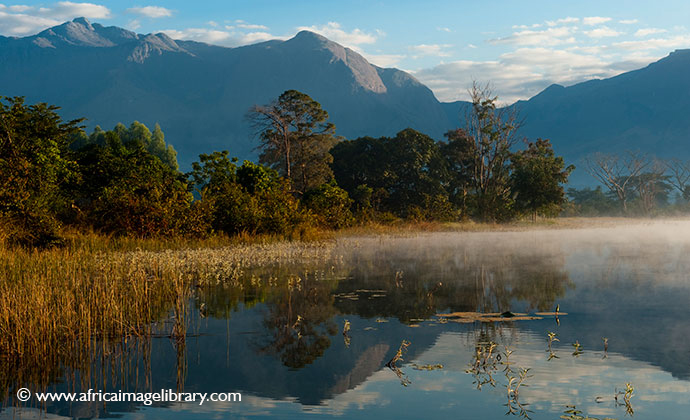
Less than an hour’s drive from Blantyre, Mulanje has long been the country’s premier hiking and rock-climbing destination, popular with residents and tourists alike for its dramatic scenery and well-organised and inexpensive facilities. Indeed, Mulanje is the main focal point of the Mountain Club of Malawi (MCM), which was founded as the Mlanje Mountain Club in 1952 and adopted its present name in 1980. There are innumerable hiking routes from the base to the plateau, the most popular being the Skyline Path to the Chambe Basin and the Lichenya Path to the Lichenya Plateau, both of which start at Likhubula Forestry Station some 8km from Mulanje Town. On the plateau itself there are ten mountain huts, one owned by the CCAP, and the remainder maintained by the MMCT and MCM in collaboration with the Forestry Department. These huts are connected to each other by trails ranging from 3 to 6 hours’ walking duration, and the peaks and valleys of Mulanje offer enough walking and climbing possibilities to keep anybody busy for at least a month. In addition, many of the streams on Mulanje are stocked with trout, and fishing permits are issued by the forestry office at Likhubula.
Long one of the best-kept secrets on the African backpackers’ trail, Nkhata Bay has steadily grown in reputation over the past two decades to eclipse Cape Maclear as the most popular traveller congregation point on Lake Malawi, if not anywhere between Zanzibar and Victoria Falls. It’s not difficult to see why. Nkhata Bay has a gloriously lush and scenic setting, comprising a twin pair of bays enclosed by forested hills and separated by a long, narrow peninsula. And the small town itself, nestled between the hills and lakeshore, is as charming as it is uncategorisable – call it an overgrown Tonga fishing village, a venerable district capital, a bustling market port or an idiosyncratically laidback lakeside resort, one senses that few of its estimated 15,000 residents would be sure which of these labels wears best.
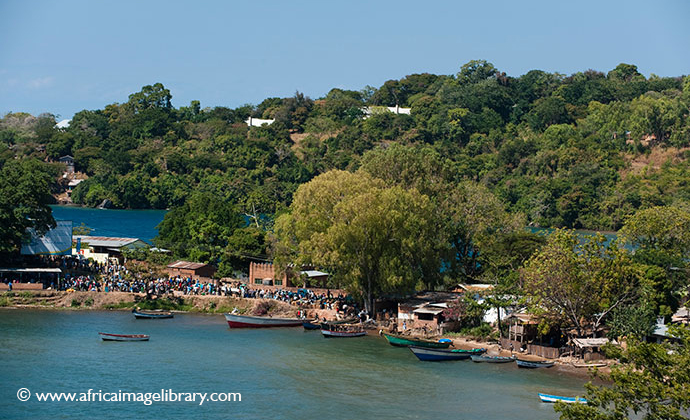
A big part of Nkhata Bay’s appeal is the rare sense of traveller community that embraces the town and string of popular lodges running out towards Chikale Beach. The place is also addictively laid-back, so much so that it habitually paralyses the will of travellers, and infuses their best-laid plans with an element of suppliant inertia. And while most visitors associate Nkhata Bay with lazy days and party nights, the town offers plenty of interest to more active travellers, including kayaking, snorkelling, forest walks, fish-eagle feeding, beach volleyball or simply joining in a local football match. Worthy of a special mention are the day/night dives and diving courses offered by Aqua Africa in a unique environment described by one experienced diver as ‘fresh water with sea equivalents’.
Nyika Plateau
At the heart of the Nyika National Park, averaging over 2,000m in altitude, lies the gently undulating Nyika Plateau, where montane grassland and fern heather communities, notable for their prolific wild flowers during the rainy season, are interspersed with isolated stands of indigenous forest and exotic pine and eucalyptus plantations. Although the Nyika Plateau is very much the centrepiece of the park and the only part that is readily accessible to tourists, the Brachystegia-covered lower slopes of the Nyika range also lie within its boundaries.
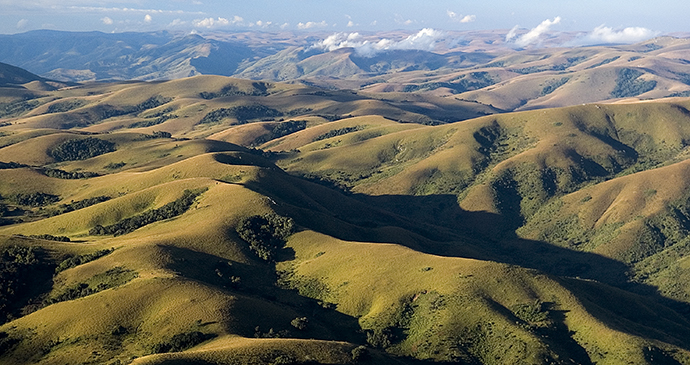
The plateau is one of the coldest parts of Malawi, moderate in summer but subject to fierce winds and with sub-zero temperatures often recorded on winter nights. October is an ideal time to visit: it’s less cold and the rains haven’t yet arrived, and wild flowers spring up all over.
Zomba Plateau
Rising to the immediate northeast of the eponymous town, the Zomba Plateau is an isolated syenite protrusion that extends over around 130km² and reaches an altitude of 2,087m at Malumbe Peak in the southwest. The plateau’s northwest rim forms the southern escarpment of the Upper Shire Valley, and is characterised by sheer drops of up to 1,200m, offering spectacular views over the plains below. Much of the plateau is protected in Malawi’s oldest forest reserve (gazetted in 1913), and while much of the indigenous vegetation has made way for pine plantations, it also supports significant patches of indigenous riverine and montane forest, as well as areas of tangled scrub and Brachystegia woodland. A large dam was constructed in 1999 in the bowl of the mountain, but this does little to interrupt the natural feel.
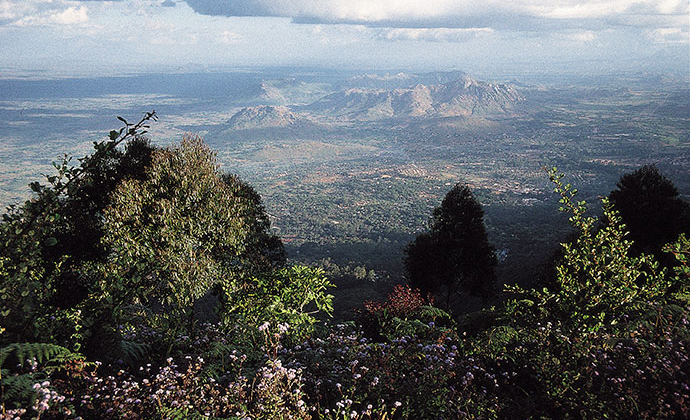
Though it is less spectacular and wild than the larger Mulanje and Nyika plateaux, the upper reaches of Zomba are considerably more accessible, and a vast network of footpaths makes it one of the most popular areas in Malawi for rambling and hiking. For most visitors, Zomba’s scenery is undoubtedly its main attraction, but the mountain also supports a rich birdlife, while mammal species present include elusive populations of leopard, serval cat and mongooses. Antelope present on the mountain include bushbuck, klipspringer and red duiker, vervet monkey and yellow baboon are reasonably common, and the lovely samango monkey is seen in indigenous forests, particularly around Chingwe’s Hole and Zomba Forest Lodge.
Cape Maclear
Situated in a 6km² enclave of unprotected land within Lake Malawi National Park, the second-largest settlement on the Nankumba Peninsula is the fishing village known to locals as Chembe but to most outsiders as Cape Maclear. It’s a beautiful spot, enclosed by tall forested mountains and lush rocky islands, and one that has long enchanted overseas visitors.
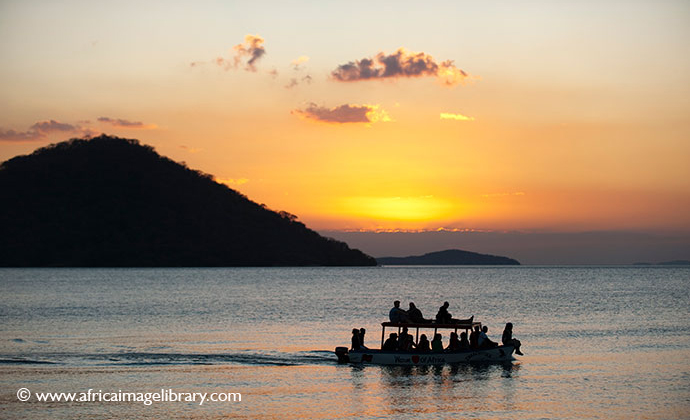
In addition to having the broadest range of accommodation options anywhere on the lake, Cape Maclear offers a peerless range of aquatic activities, from snorkelling and diving to kayaking and motorised lake excursions. The notoriously assertive beach-boy and tout culture that once characterised the village has been diffused, thanks to the adoption of a rota system that assigns a specific guide to a specific lodge for a specific period. And yet there remains a gratifyingly integrated feeling to tourist development in Chembe, with most lodges lying right in the heart of the village, so that visitors are exposed to everyday African life in an unforced manner very different from any other lakeside resort in Malawi. There’s a strong strand of community tourism here, with a range of projects that directly benefit Chembe people: from local tours, jewellery- and papermaking workshops, drumming lessons and more.
Adding to these charms, Chembe is one of the few accessible parts of the Malawian lakeshore to face northwest, which not only ensures some protection from the fierce winds that sometimes rise on the lake, but also means it is perfectly positioned for spectacular sunsets.
Chongoni Rock Art Area
Stretching northwest of Dedza for about 25km, the Chongoni Rock Art Area is one of Malawi’s most neglected national treasures, containing 127 rock faces and shelters that represent an ancient painting tradition dating back at least 2,000 years. Despite being inscribed as the country’s second UNESCO World Heritage Site (the other being Lake Malawi National Park) in 2006, the area has seen little formal tourist development. Despite this lack of development, several panels can still be visited with reasonable ease by interested travellers, most notably those at Chencherere, Namzeze and Mphunzi. At the core of the 126km² UNESCO-inscribed rock-art area, the Chongoni Forest Reserve lies immediately east of the M1 north of Dedza, and is also the site of the Chongoni Forestry College and associated Kazela Forestry Resthouse. Two-thirds of the painted panels lie within the forest reserve, including Chencherere and Namzeze, but the rock-art area also extends southwest from the M1 as far as Mphunzi Mountain, where a cluster of eight panels forms the most worthwhile goal in the area for those with time to visit one site only.
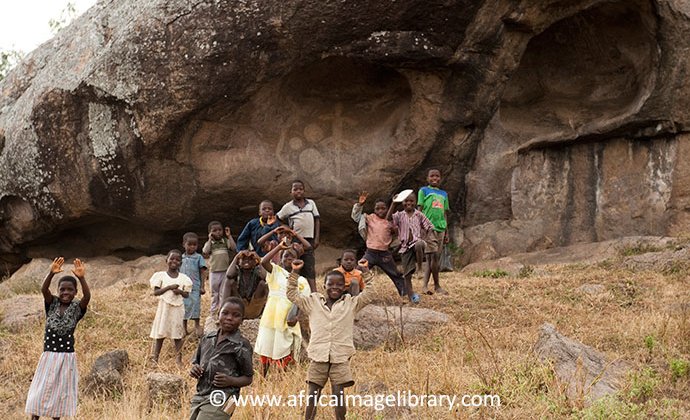
Rock paintings aside, this is a very scenic part of Malawi, studded with dozens of massive granite inselbergs (outcrops), and ideal for casual rambling, whether you’re based in Dedza Town or the resthouse at Chongoni Forestry College. The forest reserve supports a mixture of plantation forest and Brachystegia woodland, as well as small patches of evergreen forest on some of the hills. Baboon, vervet monkey, rock hyrax, grey duiker and klipspringer are quite common in the area, leopard and samango monkey are present in the evergreen forest, and the varied avifauna includes a similar range of Brachystegia-associated species as Dzalanyama, as well as a limited selection of forest species.
Surrounded by orderly tea plantations and immense granite protrusions, the breezy market town of Gurué sits at an altitude of 720m in the fertile green foothills of the southern Rift Valley. It is the eleventh-largest town in Mozambique, with a population estimated at 145,000, a comparatively moist and cool climate, and an energised, bustling mood absent from many of its more torpid coastal cousins.
Gurué’s relatively temperate climate is a refreshing change from the coastal heat, and the immediate environs offer some good opportunities for relaxed rambling in scenic surrounds (recalling the Mulanje and Thyolo districts of neighbouring Malawi), but the major attraction here is Mount Namuli, one of Mozambique’s premier hiking and birding destinations.
The town itself is of limited architectural interest, mostly dating to the post-World War II era, but there is a rather pretty small chapel, with some colourful murals inside, at the northeast end of Avenida República.
Mount Namuli
Mozambique’s second-highest peak at 2,419m, Namuli is a massive granite dome that protrudes a full kilometre above a grassy rolling plateau incised with numerous streams and gorges. The main peak of Namuli lies only 12km northeast of Gurué, but is not visible from the town itself. Several other tall domes stand on the same plateau, and the entire massif comprises almost 200km² of land above the 1,200m contour.
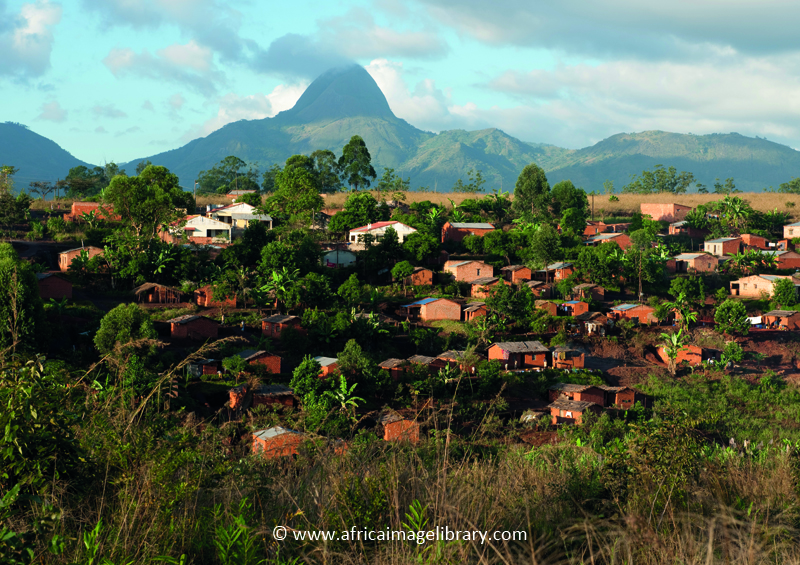
Popular with hikers for its lovely green upland scenery, Namuli is also a mountain of great biological significance, supporting a variety of montane habitats including some 12km² of moist evergreen forest that shows some affiliations to the Eastern Arc Mountains of Tanzania. Two main patches of forest remain: the larger but relatively inaccessible Manho Forest, which borders the Muretha Plateau about halfway between Gurué and Namuli Peak, and the more accessible Ukalini Forest at the southwest base of the granite cliffs below Namuli Peak.
Vincent’s bush squirrel, listed as Critically Endangered by the IUCN, is endemic to these forests, which also support samango and vervet monkey, red and blue duiker, various small carnivores and at least one endemic but as yet undescribed species of pygmy chameleon.
Cascata de Namuli
The best known of several spectacular waterfalls on the western side of the massif, the Cascata de Namuli is formed by the Licungo River as it cascades about 100m down a sloping rock face north of Gurué. It is an excellent goal for a day walk, a 5–6-hour round hike out of Gurué that passes through a variety of habitats, including the tea plantations of the Chá Zambezi Estate, stands of bamboo and small patches of indigenous forest, and you can swim in a pool above the waterfall. The riverine forest above the waterfall reputedly shelters the Namuli apalis and other rare birds, but it is unclear whether these range as far down as the waterfall itself.
Casa dos Noivos
Situated in the hilly countryside north of Gurué, the Casa dos Noivos is an abandoned hilltop dwelling that must have been very beautiful in its prime, and that still offers one of the most spectacular views in the region, over a rolling series of verdant valleys below Mount Namuli. The origin of its name (literally ‘House of the Bride and Groom’) is unclear: it may be that the house was built for a newlywed couple or simply that it is known locally as a place for romantic assignations.
Lake Tanganyika
Lake Tanganyika is one of a series of geologically old lakes that have filled areas of the main East African Rift Valley. Look at a map of Africa and you will see many of these in a ‘string’ down the continent: lakes Malawi, Tanganyika, Kivu, Edward and Albert are some of the larger ones. Zambia just has a small tip of Tanganyika within its borders, but it is of importance to the country. Access to Lake Tanganyika grants Zambia a real port with transport links to a whole side of Tanzania and (during peaceable times) direct access to Burundi. It also makes this one corner of Zambia totally different from the rest of the country, with a mix of peoples and a ‘tropical central Africa’ feel. There are some well-established lakeside lodges, those to the east within striking distance of Kalambo Falls, and two in the vicinity of the little-known but viable Nsumbu National Park.
Likoma Island
The island of Likoma, 8km long and 3km wide, lies within Mozambican waters but is territorially part of Malawi, mainly as a result of its long association with Scottish missionaries. Today, the island’s main attraction for travellers is its isolation from the mainland and mellow atmosphere. This is no conventional tropical-island paradise, though the beaches really are splendid with the mountainous Mozambican shore rising above them, while the interior has a certain austere charm, particularly the southern plains which are covered in massive baobabs, shady mango trees and studded with impressive granite outcrops.
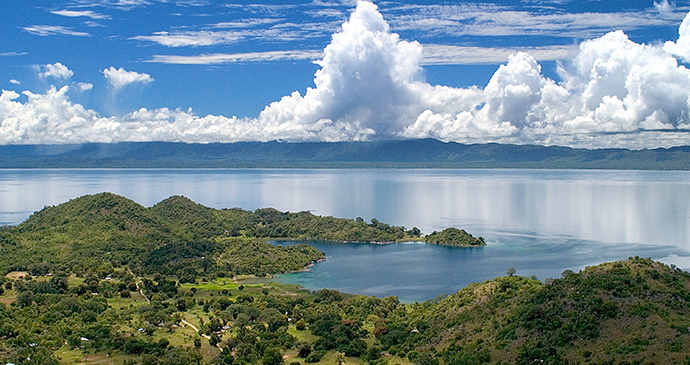
Likoma has always generated a great deal of interest among travellers, but it remains surprisingly little visited. Above all, perhaps, Likoma has an overwhelmingly friendly mood, making it a good place to get to know ordinary Malawians.
Lilongwe is not the most imposing of African cities. More than four decades after being proclaimed capital of Malawi, it still comes across as something of a work in progress: a scattered and incohesive patchwork of commercial hubs, administrative and ambassadorial zones, leafy upmarket residential suburbs and village-like suburban shanty towns that sprawl unconvincingly between grassy fields and large tracts of indigenous woodland and plantations.
The city has two main focal points, Old Town and Capital City, both very different in character, but neither exactly over-endowed with personality. Most travellers end up in Old Town, which is the main centre of commerce, boasting an energetic market and bus station, a sprinkling of shiny new malls and all manner of slightly anachronistic Indian retail stores. The Old Town has witnessed rapid expansion in recent years, yet it still has the feel of a southern African everytown, similar in mood and appearance to any number of medium-sized regional urban centres south of the Zambezi. And it’s about the only area you can tackle on foot.
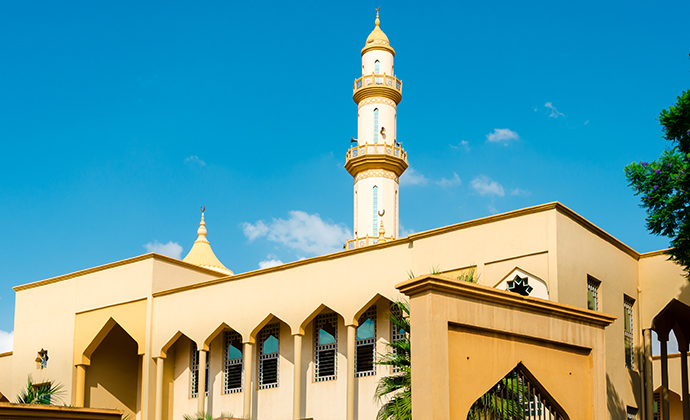
Capital City, by contrast, is a true original. Custom-built during the Banda era, it still feels tangibly contrived, an open-air huddle of semi-skyscraping office blocks, freshly painted banking houses, leaf-shrouded embassies, warehouse-like supermarkets and half-full car parks whose distinguishing feature is a kind of collective capacity to cancel each other out. From whatever angle you approach Capital City, and no matter how often, it is difficult to shake off the feeling that it ended before it began and you somehow blinked at the wrong moment!
So it’s not Dakar or Timbuktu, but Lilongwe could scarcely be a more equable or manageable introduction to urban Africa. The climate is comfortable, getting in and out of town is simplicity itself, accommodation is abundant and conveniently situated, and shops and markets are well stocked. In some ways, Lilongwe feels like a microcosm of the country it governs – small but deceptively densely populated, friendly and personal, dusty and colourfully chaotic, and full of contrasts. Behind the houses and offices, within eyeshot of parliament, people still grow maize in their gardens. Villagers cycle miles from outlying areas to sell produce at the country’s largest market, weaving between the buses that form jerking, hooting, belching queues in the Old Town centre. And as night falls, the familiar urban rumble is punctuated by sounds eerily evocative of Lilongwe’s African setting – the wild whooping of spotted hyenas and chilling cries of bushbabies, both of which haunt the nature sanctuary bisected by the main trunk road between Old Town and Capital City.
Livingstonia
Perched on the Rift Valley Escarpment above Lake Malawi, the town of Livingstonia, founded by Scottish missionaries in the late 19th century, is one of the most scenic places in all of central Africa. The vertiginous views from the edge of this historic town – plummeting down the escarpment and across the lake to the Livingstone Mountains in Tanzania – are quite breathtaking. Indeed, on a clear day, and with sufficient imagination, the horizon is so distant that you’ll swear you can see the curvature of the Earth.
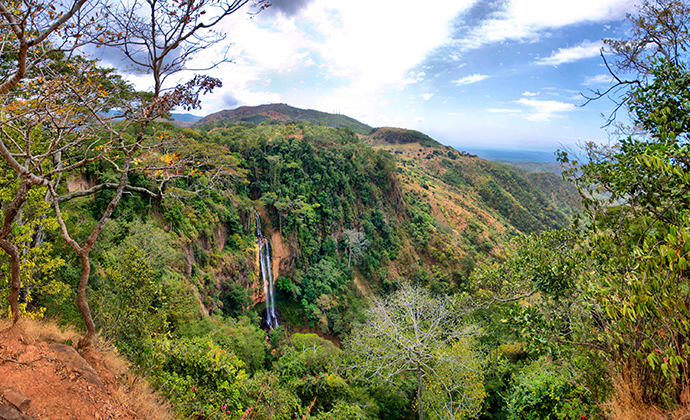
Arguably the most intriguing settlement anywhere in Malawi, and certainly the most unusual, Livingstonia is a curiously unfocused place. Dotted along the escarpment, there is a resthouse, school, technical college and hospital, all dating to the turn of the 20th century. Elsewhere, separated by scattered patches of plantation forest and indigenous woodland, is a low-key market enclosed by a few poorly stocked grocery shops, the vast mission church, and a cache of venerable administrative buildings and a clock tower overlooking a bizarrely redundant stone traffic circle surrounded by blooming flower beds. The overall impression is as if somebody started transporting a small Victorian village to the edge of the Rift Valley Escarpment, but got bored before they finished the job.
The combined scenic and historical interest of Livingstonia makes it one of the most popular non-lakeside tourist destinations anywhere in Malawi. True, it’s not that easy to reach on public transport, but for many the uphill hike from Chitimba is an attraction in itself. And once you’ve ascended the escarpment, there’s the choice of several very different but equally likeable places to stay, while amusements include a tour of the village and its museum, the walk to the spectacular Manchewe Falls, and the wide range of hikes that are possible around the escarpment.
Liwonde National Park
Dominated by the sluggish Shire River and its lush fringing vegetation, Liwonde National Park evokes every romantic notion of untrammelled Africa, especially at night, when the air resonates with the uninhibited chirruping of frogs and grunting of hippos. And while this 548km² reserve has to rank as a second-string safari destination compared with the continent’s finest, it does offer perhaps the best wildlife viewing and birdwatching in Malawi, and its aesthetic merits – this is the quintessential African river scene – elevate it close to being one of Africa’s truly great game reserves.
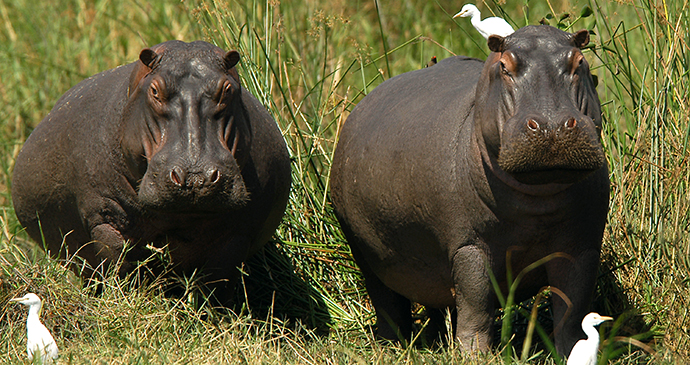
Liwonde is a relatively small park, only 50km long and nowhere more than 15km wide, and an estimated 100,000 people live within 5km of its boundaries, where they attempt to scrape a living in what is technically a marginal agricultural area. As a result, there has been a long history of conflict between wildlife and local villagers, and poaching is an ongoing problem, one that resulted in the local extinction of several large mammal species, including lion and African wild dog, though following the park’s fencing in 2017 lion – and cheetah – have been reintroduced. There is a wealth of wildlife to be seen in Liwonde, and sightings here feel very genuine, wild and pristine.
Majete Wildlife Reserve
Gazetted in 1955 and neglected by almost everybody except poachers for its first half-century of existence, Majete Wildlife Reserve is in the midst of a dramatic and encouraging resurgence. With the reintroduction of lions (rounding out the ‘Big Five’) in 2012, Majete has arguably distinguished itself as Malawi’s premier game-viewing destination. The catalyst for this reversal of fortunes is the private African Parks organisation, which entered into a 25-year management contract with the government in March 2003, with the twin aims of resuscitating the reserve as a conservation area and as a source of sustainable income for surrounding communities. African Parks has since reintroduced more than 3,000 head of game into the reserve, erected fences, improved the road infrastructure, constructed an excellent community-owned tented camp, cultural centre and campsite, initiated a varied programme of tourist activities, and granted the highly regarded Robin Pope Safaris a private concession for their stunning new five-star luxury lodge, Mkulumadzi.
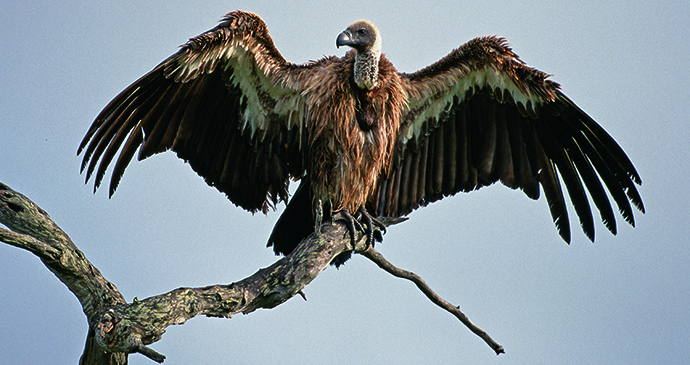
Only a few years ago, it would have been misleading to compare Majete to Liwonde National Park, further north along the Shire River, but the recent improvement in game viewing, infrastructure and accommodation has placed Majete in direct competition with Liwonde for the honour of being Malawi’s premier park. This ongoing development is massively encouraging, and Majete now boasts the greatest antelope diversity in the country, offering a good chance of seeing half a dozen species in the course of a day, including the majestic greater kudu, handsome sable antelope and localised Lichtenstein’s hartebeest.
Related books
For more information, see our guide to Malawi :
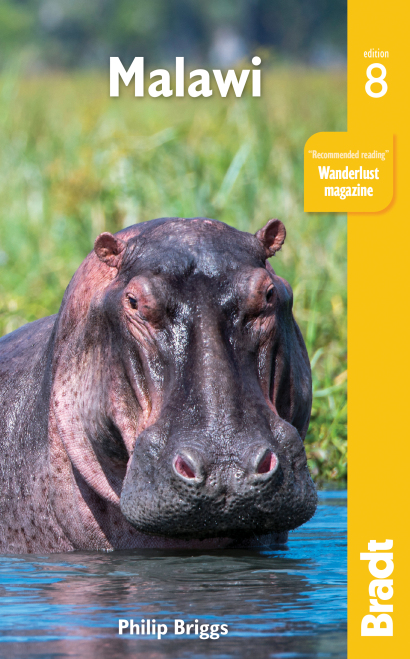
Related articles
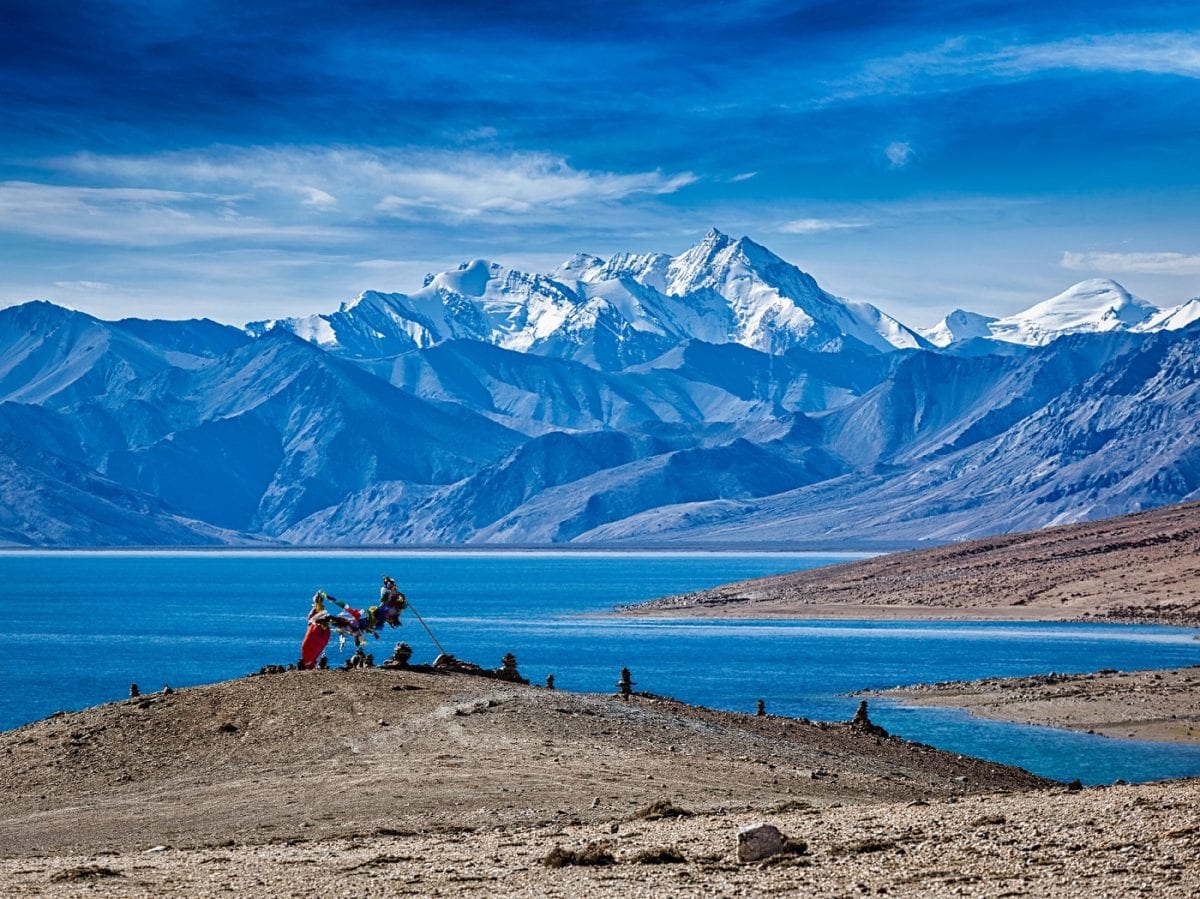
The most impressive lakes in the world
From boiling lakes to vast alpine bodies of water, these are our favourite lakes from around the world.
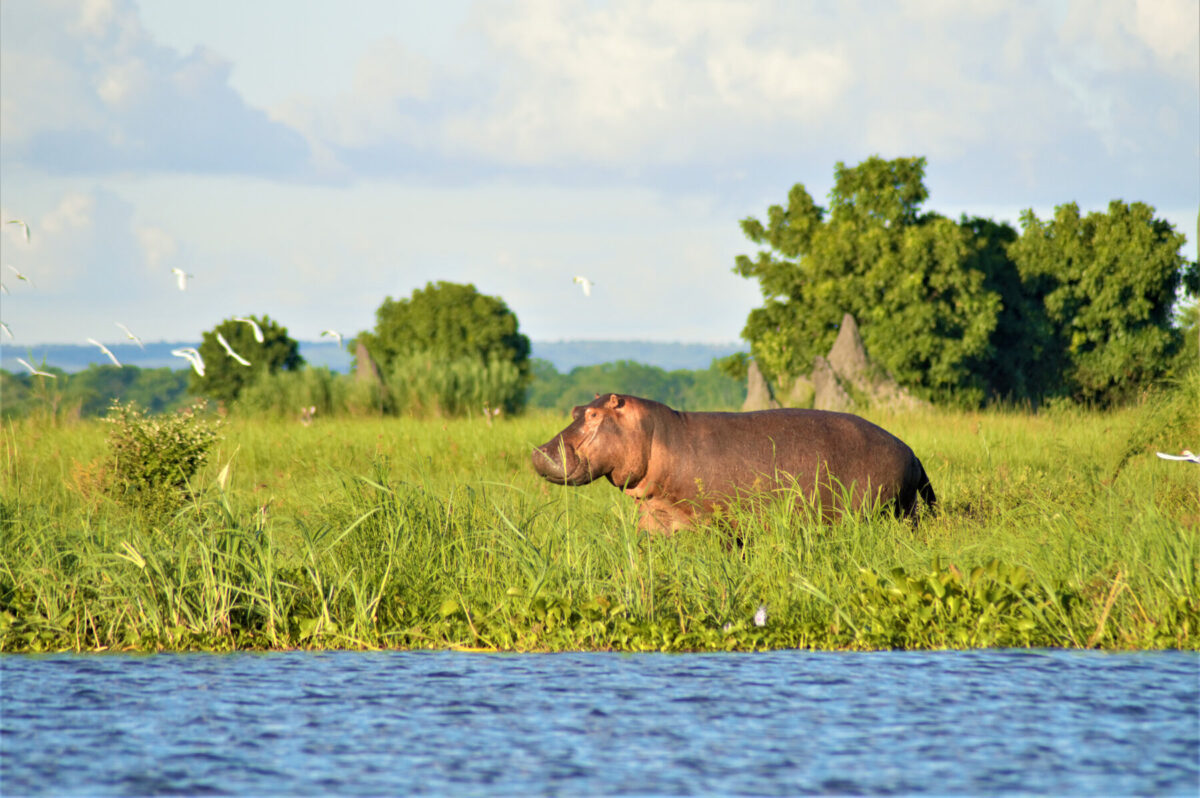
Malawi: the ultimate wildlife guide
Catch a glimpse of southern Africa’s iconic animals with this selection of reserves and national parks.
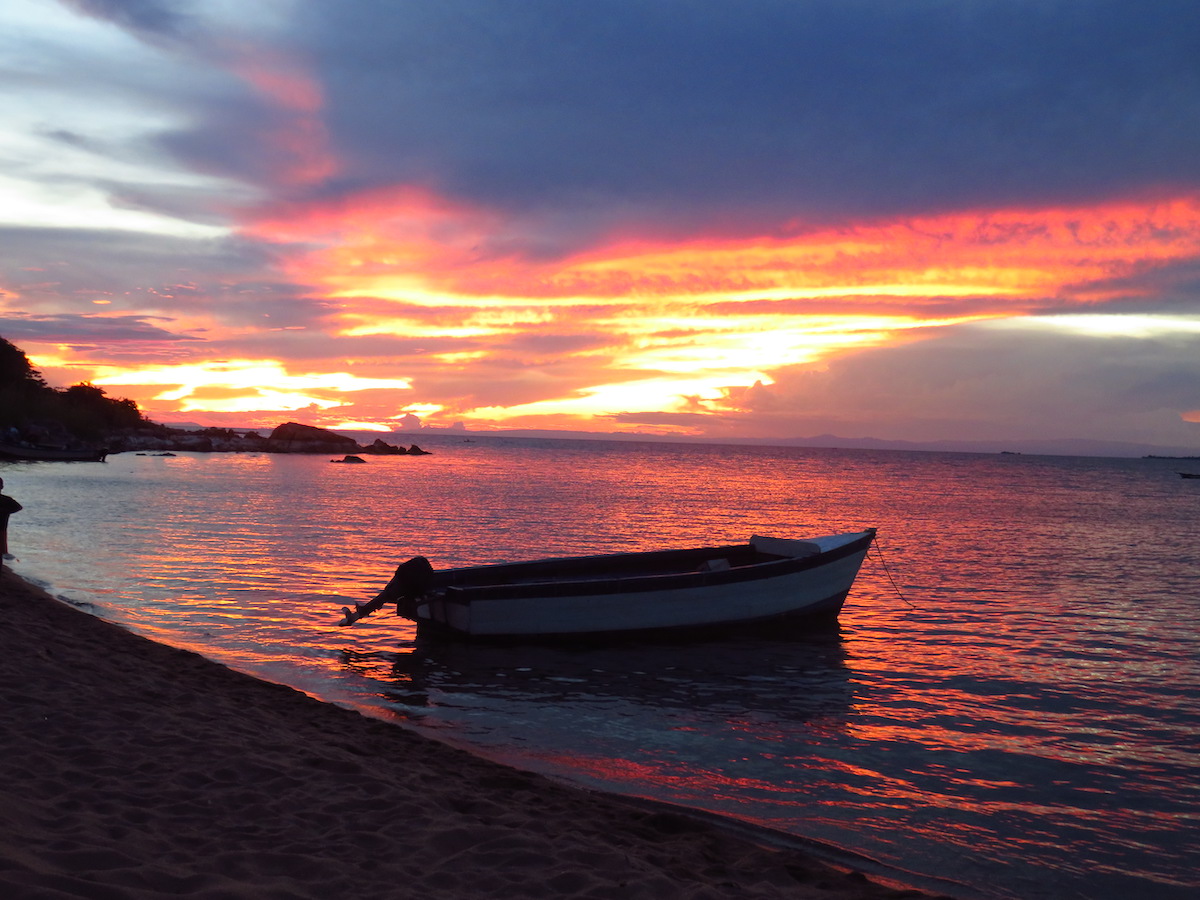
Deserting paradise: the effect of Covid on tourism in Malawi
To Westerners, it may seem as if life in Malawi hasn’t changed much during the pandemic.
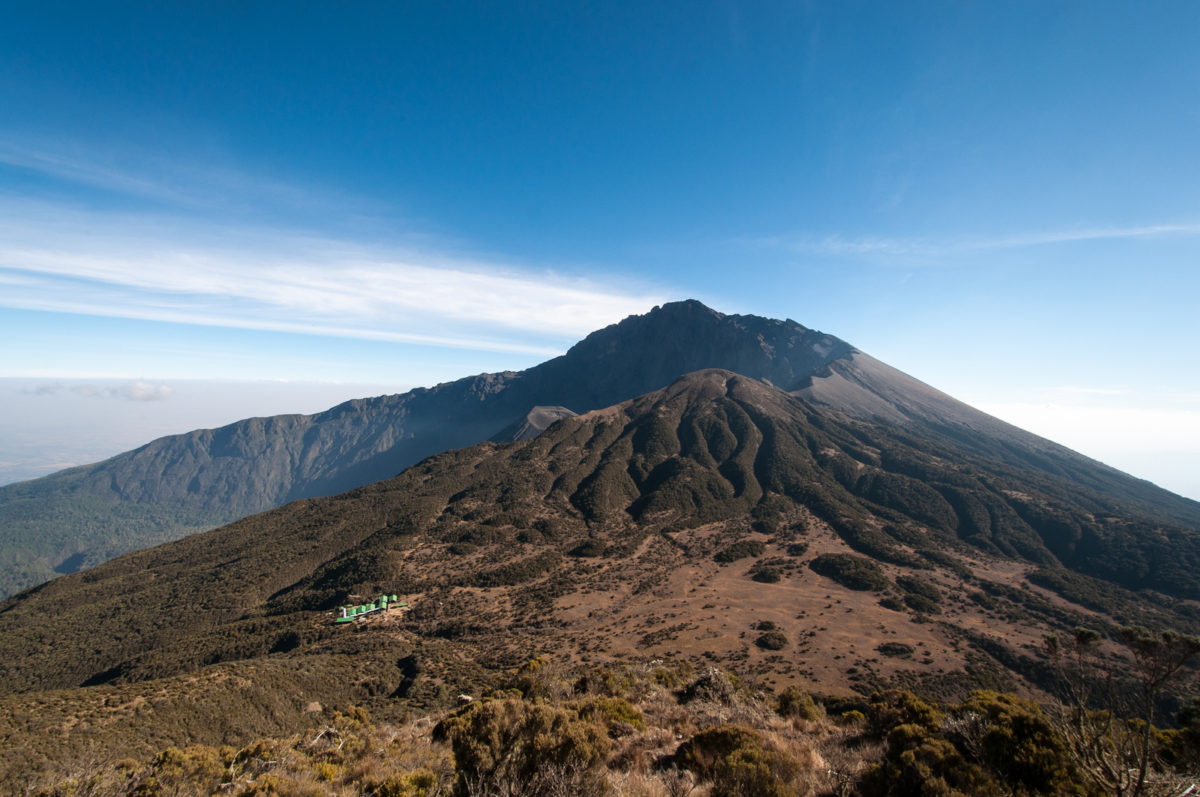
One step beyond: the world’s most impressive lesser-known mountains
How many of these have you climbed?
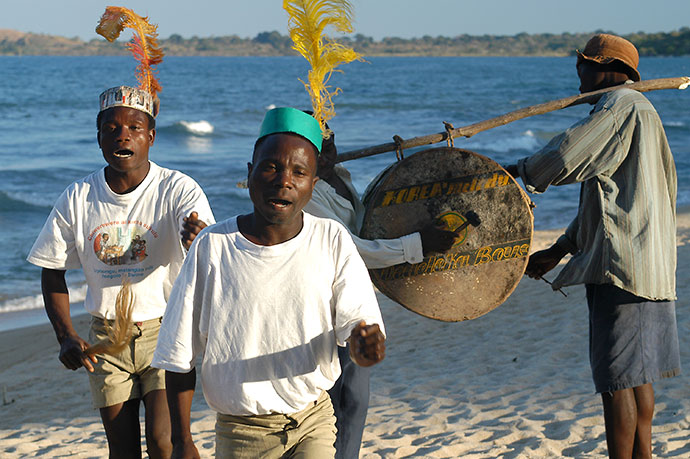
Malawi’s music
Author Helena Smith discusses the range of music styles you can expect to hear on a trip to Malawi.
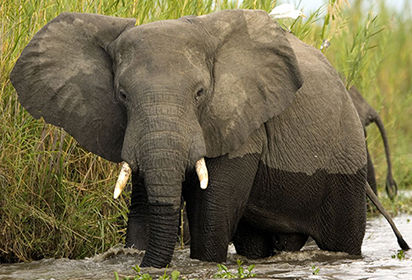
500 elephants on the move
One of the largest and most significant elephant translocations in human history has taken place in Malawi
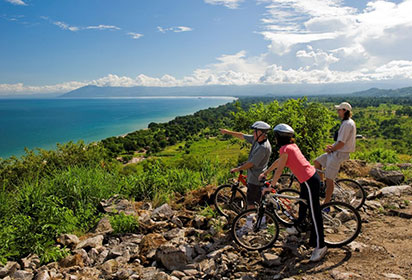
The best activities Malawi
There are plenty of opportunities to get active in Malawi – from watersports on the lake to horseriding, hiking and more.
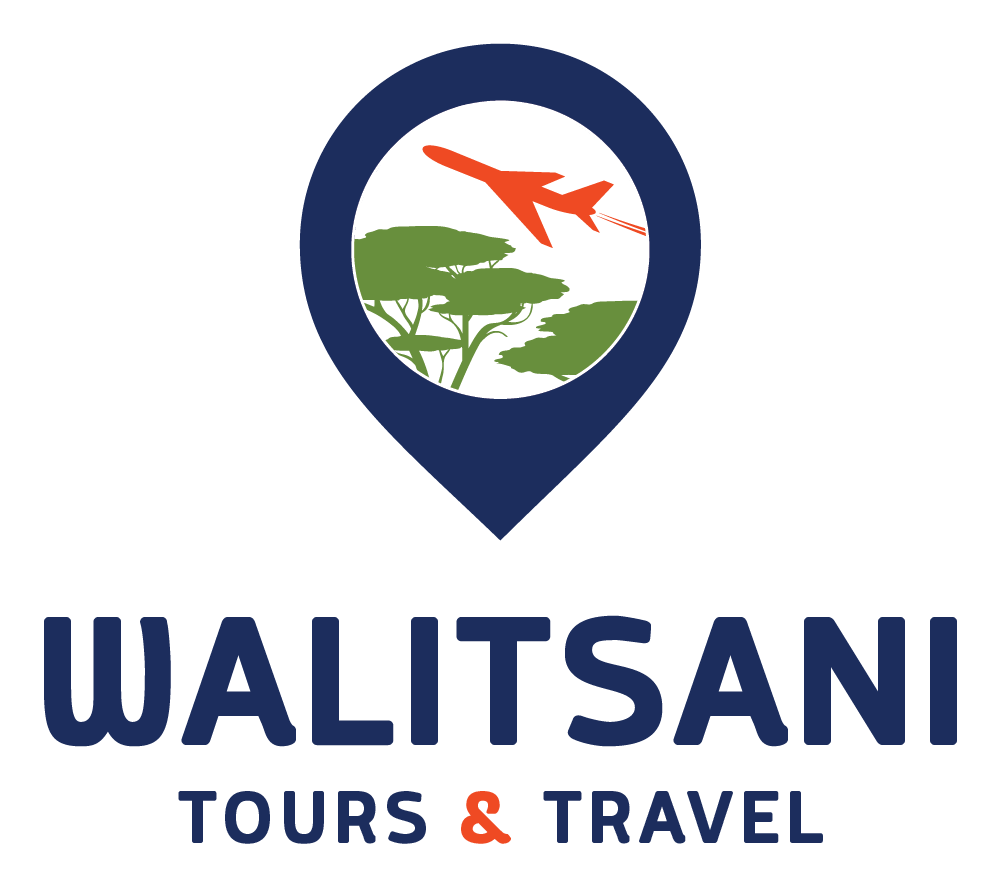
Experience the Excitement in Malawi & Southeast Africa
Visit Malawi and experience all that Malawi and Southeast Africa have to offer. From lounging on lakeside beaches to wildlife safaris, there is something for everyone to enjoy. Based in the capital city of Lilongwe, we are the experts when it comes to Malawi travel.
Malawi's 'Lake of Stars'
Dr. David Livingstone called Lake Malawi the ‘Lake of Stars’. Its impressive size, depth, and beauty all contribute to the popularity of this lake as a tourist attraction for people all over the word. Kayaking, cruising, snorkeling, scuba diving, and relaxing on the beaches are all popular activities to enjoy.
Plan Your Escape to Southern Malawi
Enjoy walking safaris, game drives, and mountain hiking at Majete Game Reserve. Sample some of the world’s best teas at Huntingdon House and take in the breathtaking views on Mount Mulanje. Southern Malawi is a destination that shouldn’t be missed!
The Wildlife of Liwonde
Liwonde National Park is an amazing place – with an even more amazing comeback story. From removing thousands of illegal wildlife snares to reintroducing cheetahs and lions, as well as hosting over 20,000 tourists per year, the ever-changing story of Liwonde will inspire you.
Liwonde National Park & Mumbo Island Adventure
Explore Liwonde National Park through walking safaris, Mumbo Island Malawi wilderness safaris, game drives, and a thrilling boat safari along the Shire River. Relax on Mumbo Island and enjoy snorkeling, diving, and kayaking in Lake Malawi’s pristine waters. This is the perfect Lake Malawi Vacation!
Mulanje - The 'Island in the Sky'
Malawi is the perfect place to immerse yourself in history, culture, and amazing outdoor experiences. Mount Mulanje is Malawi’s highest peak. From camping and hiking on Mulanje to enjoying peaceful relaxation at the surrounding tea plantations, you’ll want to discover the ‘island in the sky’ for yourself.
Back to Nature in Cape Maclear & Majete Wildlife Reserve
Enjoy game drives and a boat safari on the Shire River. Get a firsthand look at Malawian culture at the Kungoni Centre of Culture and Art. Experience all the wildlife, excitement, and relaxation that Lake Malawi has to offer! When it comes to Malawi safari packages, this is a great option!
Majete Wildlife Reserve
Majete Wildlife Reserve is more evidence of Malawi’s success in its wildlife & tourism revival. Since 2003, 16 species have been reintroduced. Poaching has been greatly reduced, tourism has increased, and the local community is thriving.
Featured Tours
Whether you enjoy quiet, peaceful beach vacations or busy trips filled with adventure, Malawi is a great place to visit. View our most popular Malawi travel packages and start planning your Malawi vacation today! Looking for an extended vacation, or only have a day or two? Contact us! We would be happy to create a custom travel package for you.
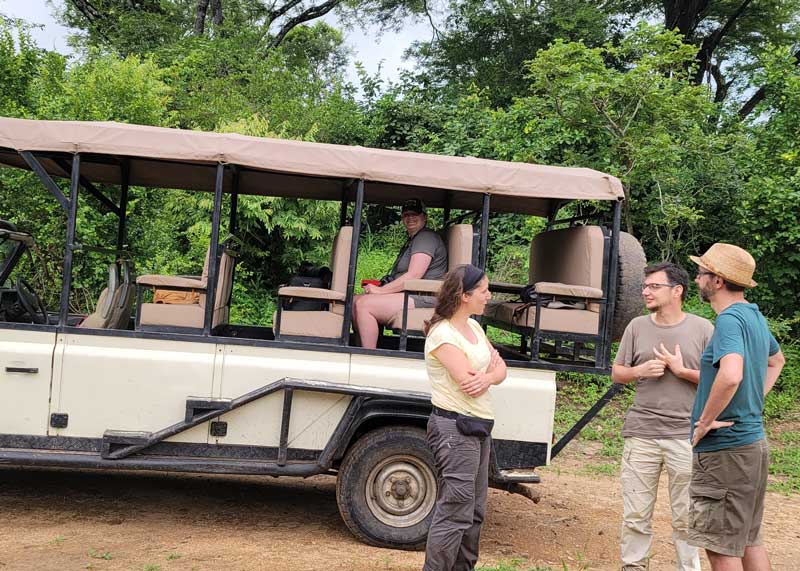
4 Night / 5 Day
Liwonde national park & mumbo island adventure.
Explore Liwonde National Park through walking safaris, game drives, and a thrilling boat safari along the Shire River. Relax on Mumbo Island and enjoy snorkeling, diving, and kayaking in Lake Malawi’s pristine waters.
Liwonde National Park, Mumbo Island, Lake Malawi
Walking safaris, game drives, cultural village visit, boat safaris, kayaking, watersports, snorkeling & diving, multiple dates available.
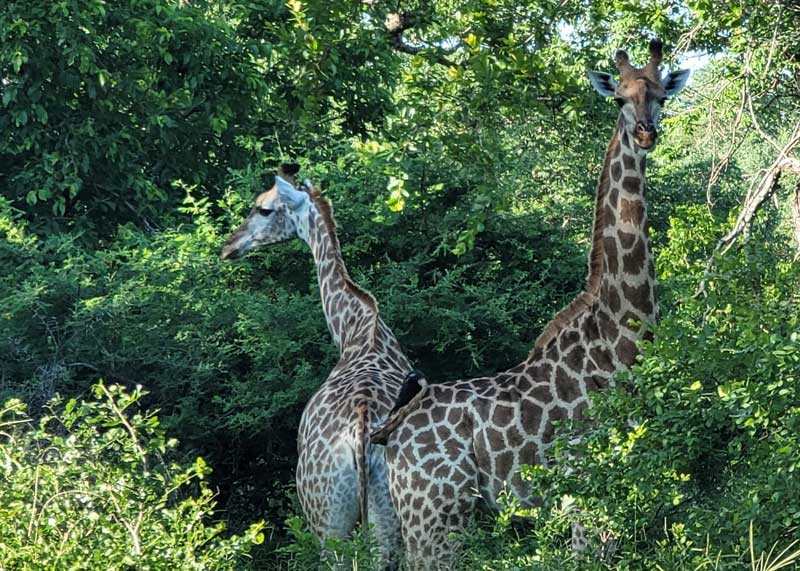
5 Night / 6 Day
Escape to southern malawi – wildlife viewing, hiking, & tea tasting.
Enjoy walking safaris, game drives, and mountain hiking at Mulanje Mountain. Sample some of the world’s best teas at Huntingdon House and take in the breathtaking views on Mount Mulanje.
Majete Game Reserve, Huntingdon House, Mount Mulanje
Walking safaris, game drives, cultural village visit, tea tasting, mountain biking, hiking, swimming.
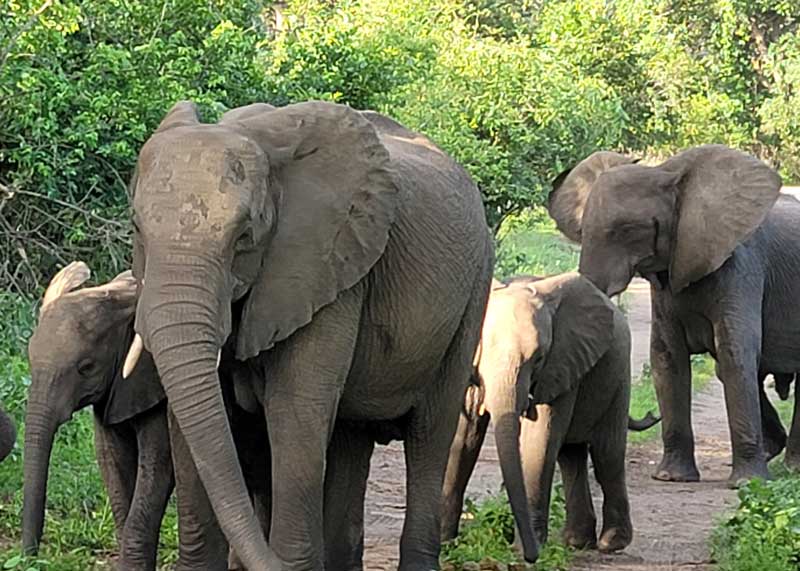
Back to Nature in Cape Maclear & Liwonde National Park
Enjoy game drives and a boat safari on the Shire River. Get a firsthand look at Malawian culture at the Kungoni Centre of Culture and Art. Experience all the wildlife, excitement, and relaxation that Lake Malawi has to offer.
Liwonde National Park, Kungoni Centre of Culture and Art, Lake Malawi
Kayaking, water sports, sunset cruises, snorkeling & diving, cultural visits, boat safaris, walking safaris, game drives, experience the excitement.
Our clients have had amazing experiences with us. From breathtaking views to unbelieveable wildlife encounters and everything in between, we can help you create the experience you’ve been dreaming of. Visit Malawi for ultimate relaxation or adventure!
We are dedicated to helping you create unforgettable memories in beautiful southeast Africa & Malawi. Trust us with your Malawi vacation arrangements and leave your stress behind. Walitsani Tours and Travel is your dedicated Malawi travel guide!
What We Offer
At Walitsani Tours & Travel, we offer a variety of Malawi travel packages to help you make the most of your Malawi vacation. Check out our featured packages and start planning an unforgettable getaway!
Why Travel with Walitsani?

Hassle-Free Planning
We take care of every detail, from finding the best airfare to booking activities.

Knowledgeable Guides
All our guides are true local experts and will share their knowledge with you!

Unforgettable Experiences
Our African tours are designed to fuel your mind and delight your senses.
Curated Experiences
At Walitsani Travel, we specialize in planning amazing travel experiences in Malawi & Southeast Africa. Ready to plan your adventure? Talk to one of our friendly agents today.
Follow Along!
Thinking about a trip to Malawi? Malawi has so much to offer any traveler. Whether you like outdoor adventure or pure relaxation, Malawi is the perfect destination for your next vacation. Follow us on Instagram for specials, travel tips, and more!

2024 Malawi International Tourism Expo
The Warm Heart of Africa welcomes you to the 5th edition of MITE
25-27 April, 2024
Bingu International Convention Center
Showcasing the real African experience
The Warm Heart of Africa welcomes you to the 5th edition of “Takulandirani” Malawi International Tourism Expo (MITE) to be held from 25th to 27th April, 2024 at the Bingu Wa Mutharika International Convention Centre (BICC) in Lilongwe.
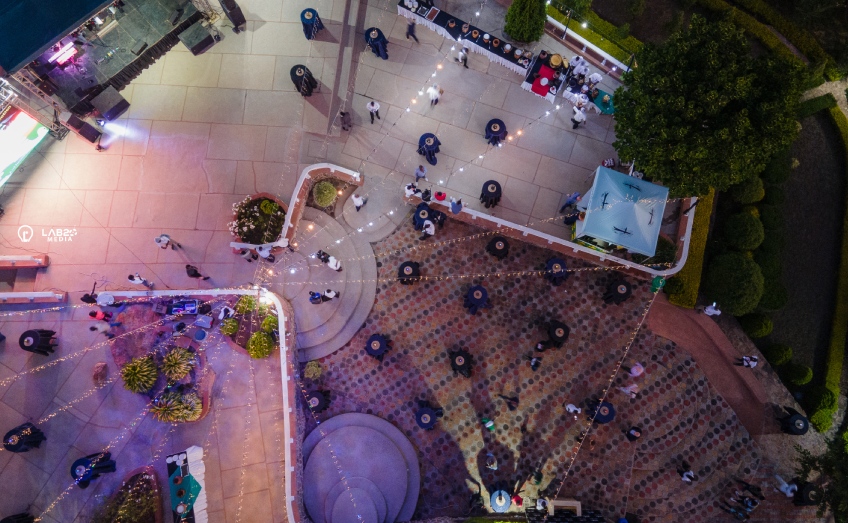
Secure your access

Discover products and services to incredible experiences in destinations.

Showcase your products, services and meet tourism players from all over the world.
Attend as Visitor
Attend as a visitor or trade visitor and meet participants at the expo. Meet suppliers, check out new industry developments , keep a close eye and get your hands on new products, attend demonstrations, and compare features and prices.
These Experts will Inspire you to Create Future

Vera Kamtukule
Minister of Tourism

World is committed to making participation in the event a harass ment free experience for everyone, regardless of level experience gender, gender identity and expression
Sessions by David
Marketing Matters

Rachel Sibande
Director, mHub
Last time we held the event

An event of this magnitude would not be possible without the support of our partners.

Contact Us Below
We'd Love to Hear From You! Please fill out the form below with any questions, comments, or feedback you have for us.

Attendant Registration
Exhibitor registration, portal announcement, check back in on 30th march for all interactive features in the portal, for now.. make sure you register below.

IMAGES
COMMENTS
African's Warm Heart, Malawi, is beating faster now and the legendary welcome is there for all who wish to experience the unrivalled combination of Lake, Landscape, Wildlife & Culture in one of Africa's most beautiful and compact countries. Recently crowned as one of Lonely Planet's Best in Travel Top Countries for 2022 (a remarkable second ...
Malawi's temperatures are moderated by altitude. Only in the hottest month (usually November) will maximum temperatures get above 30°C, and then only in the hotter (low lying) locations. In the coldest month (probably July) maximum temperatures will be in the low 20's. On the uplands (e.g. Zomba, Nyika and Viphya) it can be quite cold at ...
The jewel in the crown of the country's tourist experiences is Lake Malawi, "discovered" by the missionary-explorer Dr David Livingstone just over 150 years ago. Although totally landlocked, Malawi is not denied its "inland sea". This vast body of freshwater fringed by beaches of golden sand is not only a scenic wonderland but it ...
About Us. Malawitourism.com is Malawi's primary website for travel and tourism and provides the best online resources for all potential visitors to the country, as well as for members of the media and travel trade interested in Malawi. The site is run in the UK by Geo Group Marketing Ltd on behalf of the Malawi Travel Marketing Consortium ...
The pages in our Travel Guide and Travel Directory sections have plenty more useful info to help you plan your visit to Malawi. Use the main menus or the options below to get to the pages you need. We also have a number of useful digital documents that you can download and use offline, including the Best fo Malawi brochure/directory and a full ...
Lake Malawi is the jewel in the crown of the country's tourist attractions. This is the 'inland sea' of the otherwise land-locked Malawi. This vast body of crystal clear freshwater fringed by beaches of golden sand is not only a scenic wonderland but it provides water sport opportunities for those looking for something beyond sun, sand ...
Malawi's Culture. Malawi's greatest asset is its people. They are wonderfully friendly and warmly welcoming. All visitors are met with smiles and a truly genuine and long-lasting welcome. With a population of over 18 million, Malawi is one of the more densely populated countries of this part of Africa. Most of the population is rural, living ...
Safaris. Two of the great attractions of Malawi's national parks and wildlife reserves are their completely unspoilt wilderness and the absence of mass tourism. When you take a safari in Malawi you really do feel you're looking at a scene that David Livingstone would recognise from 150 years ago. There's a real touch of the Garden of Eden ...
Department of Tourism , Tourism House, Off Convention Drive , Private Bag 326 Lilongwe , City Centre Malawi, Africa [email protected] +265 1 775 499
Here's how to visit Malawi on a budget. Activities. The 10 best things to do in Malawi. Beaches. The 8 best beaches in Malawi. National Parks. Malawi's 10 incredible national parks and reserves: wildlife, wilderness and water sports. in partnership with getyourguide.
6. Blantyre. Best city for food and nightlife. Blantyre is Malawi's second-largest city, a commercial hub and the gateway to attractions in the southern part of the country. Travelers driving to Majete, Thyolo, Mt. Mulanje, Michiru Mountain and Zomba Plateau stop in this spirited town filled with bars and restaurants.
For first-time visitors to Africa - and for anyone who is drawn to nature and outdoor adventures - Malawi is a wonderful destination. This tiny sliver of a country has many superb places to visit, offering scenic diversity, from the vast, idyllic Lake Malawi and the zebra-dotted high plains to the epic heights of Mt Mulanje and the escarpment views at Livingstonia.
Malawi, officially known as the Republic of Malawi, is a country located in southeastern Africa.The country is also referred to as "The Warm Heart of Africa", due to the friendliness of the people.. Malawi has a variety of tourist attraction sites including Lake Malawi (29,600 km²), several national parks, game reserves, and Mulanje Mountain.The tourism industry in Malawi has significantly ...
Malawi Tourism, Lilongwe, Malawi. 26,301 likes · 108 talking about this. Ministry of Tourism
Cities [edit]. 1 Lilongwe - political capital of Malawi and the seat of government; 2 Blantyre - economic capital and largest city with an interesting downtown, decent nightlife and music, a range of hotels from the elegant to resthouses, and a vibrant street and market culture; 3 Mzuzu - the largest town in the North of Malawi. For most it's just a stop for cash and internet en route to or ...
10. Avoid driving at night. The greatest danger in Malawi is likely to be on the roads, where speeding and wildly passing cars are common. Driving at night on the unlit roads should be avoided altogether. When planning your trip, consider using Malawi's coach system and the lake ferry rather than driving yourself.
Take the Ferry to Likoma Island. Per-Gunnar Ostby / Getty Images. View Map. Address. Likoma island Nkwazi Village, Likoma, Malawi. Phone +260 97 9312766. Web Visit website. Likoma Island is actually in Mozambique waters but is still a Malawian territory. It's home to a huge cathedral built in the early 1900s.
Malawi Tourism. @TourismMalawi. The Official twitter page for Malawi Tourism- all you need to know about Malawi's tourism attractions, upcoming events and places of interest. Lilongwe, City Center visitmalawi.mw Joined March 2013. 736 Following.
Malawi Travel. 9,079 likes · 215 talking about this. All you need to know about making Malawi your holiday destination
The Director of Tourism. Malawi Department of Tourism. Tourism House, Off Convention Drive Private. Bag 326, City Centre. Lilongwe [email protected] +265 1 775 449/ +265 984 222 272.
Self-drive. Malawi is fairly easy to drive around. The speed limit for main roads is 80km/h and in towns drops down to 50km/h. Although the change is not always signposted, it's best to slow down in towns and wait to regain speed until well after an inhabited area to avoid speed traps set up by the police.
Malawi has so much to offer any traveler. Whether you like outdoor adventure or pure relaxation, Malawi is the perfect destination for your next vacation. Follow us on Instagram for specials, travel tips, and more! Visit Malawi and experience all that Malawi and Southeast Africa have to offer. From lounging on lakeside beaches to wildlife ...
Takulandirani Showcasing the real African experience The Warm Heart of Africa welcomes you to the 5th edition of "Takulandirani" Malawi International Tourism Expo (MITE) to be held from 25th to 27th April, 2024 at the Bingu Wa Mutharika International Convention Centre (BICC) in Lilongwe.
Tidziyamba ndife a'Malawi! Ipatse Moto! #IpatseMotoDanceChallenge #Malawitourism #TAKULANDIRANI #mite2024 #TidziyambaNdifeaMalawi. Climb Malawi · Original audio